

The 10 Best Architecture Tours in New York City

Attention fans of architecture: In this article, I’ve compiled the best architecture tours in New York for you! I’ve done almost all of them myself, because I’m a big fan of them. On these tours you’ll learn many interesting facts as well as background information about the buildings that have significantly shaped the skyline of New York.
You might also love these articles
- Beaux Arts Buildings in NYC
- Art Deco Buildings in NYC
My tip: check out the 50 most important landmarks of New York here – and watch my video about the architecture boat tour around Manhattan here. Have fun!
My TOP 10 Architecture Tours in NYC
Each of the tours has its own focus and concentrates on one or two neighborhoods, but there is also one of my absolute favorite boat tours, which is accompanied by the organization AIA New York (Center for Architecture).
Classic Harbor Line: Architecture Yacht Cruise
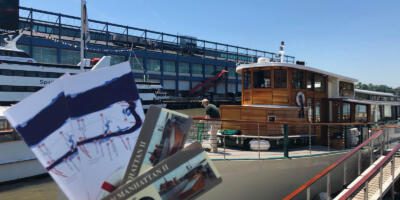
The architecture boat tour takes you around Manhattan in 2.5 hours. On a 30 meter long wooden ship in the style of the 1920s you can relax and learn a lot of interesting facts about the many small and large buildings of the city. The tour is super-relaxing and the price includes a drink (vino, soft drinks) and small snacks.
Rockefeller Center Architecture and Art Walking Tour

Explore the famous Rockefeller Center with this tour! The guided tour includes your own headset through which you will be able to hear your guide tell you everything about the history the work and architecture of the building.
Art Deco and Architecture Tour in New York City with Expert Guide

Midtown Manhattan is the location of numerous iconic New York landmarks. On this walking tour packed with masterpieces, you can expect to discover most of them in just a few hours. Witness the top attractions and uncover the stories behind these great sights that are everywhere- Manhattan’s grandeur ensures that you won’t be bored. The enormous buildings will impress you every time you see them, so don’t miss the chance to encounter them all.
Fifth Avenue Gilded Age Mansions Walking Tour

I highly recommend this walking tour to architecture enthusiasts. On this tour, you’ll be able to see the footprint of the largest single residence ever built in Manhattan. Along the way, you’ll take in outrageous stories of Gilded Age wealth, architecture, and art on Fifth Avenue – the very Avenue where they happened. You’ll also learn some of the secrets of the famous Frick Collection as you stroll by, and discover a charming bookshop tucked into a Fifth Avenue mansion. Additionally, you’ll uncover one of the last single residence mansions on Fifth Avenue and visit the oldest building on Millionaire’s Row. Don’t miss out on the opportunity to experience all of this on one amazing tour!
High Line, Chelsea & Meatpacking Tour
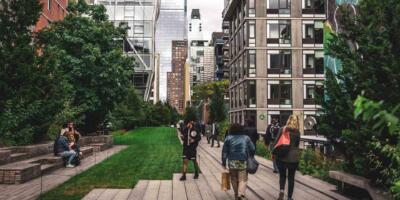
Go on a fun adventure in New York’s only park above street level- the Highline. Experience the Chelsea neighborhood from a whole new vantage point and find out more about the history of the famous Meatpacking District including how it developed into one of the wealthiest neighborhoods in the world.
The Grand Central Terminal Official Guided Tour

There’s something to be said for a tour sponsored by the makers of Grand Central Terminal. Created in 2013 to celebrate the terminal’s 100th birthday, this 75-minute tour highlights its history, architecture and operations.
Harlem Walking Tour: Mount Morris Park Historic District w/ Lunch

This insider walking tour will teach you all about Harlem’s diverse cultural and social history. It will take you to the Mount Morris Historic District, which will be introduced to you by a New York guide. You will be surprised how elegant the houses are here and how much history this part of New York City will tell you. Really exciting!
Victorian Flatbush, Brooklyn Walking Tour

The Flatbush neighborhood located in Brooklyn is a scenic area that is well-known for its beautiful Victorian mansions. By taking part in this walking tour, you will become familiar with the historic district, appreciate its impressive 19th-century architecture, and visit famous landmarks such as the Kings Theatre, Ditmas Park, and the Flatbush Reformed Church.
Brooklyn Bridge & DUMBO Walking Tour
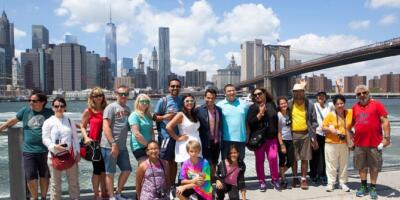
Walk across the Brooklyn Bridge and learn about the exciting and dramatic history of this world-famous New York City neighborhood, all while enjoying breathtaking views of the Manhattan skyline. On the other side of the Brooklyn Bridge you will discover DUMBO, a newly popular and up and coming part of Brooklyn.
Meeting point is 52 Chambers Street in front of the Tweed Courthouse.
Flatiron Food, Architecture, and History Tour

The Flatiron Building is one of the most photographed buildings in the city. But there is much more to discover in the direct neighbourhood. Thanks to the organization “Flatiron 23rd Street Partnership” you will be guided through the district every Sunday by a free guide. Meeting point is the southwest corner of Madison Square Park.
Which architectural style dominates in New York City?
In New York City you will find many different styles. However, there is one architectural style that was particularly influential: Art Deco. Many important buildings were built during this era, including the Empire State Building and Rockefeller Center. You can find the most beautiful of such buildings in my article about Art Déco in New York.
What are the most famous landmarks in New York?
The official landmarks of New York include the Empire State Building, the Statue of Liberty, the Brooklyn Bridge and the New York Public Library. In total, there are over 100 of these so-called landmarks, which are selected by the Landmarks Preservation Commission.
What style of architecture is in SoHo, Manhattan?
SoHo in Manhattan is known for its Cast Iron architecture, which had its golden age in the 19th century. To this day, you’ll find entire streets of these beautiful buildings in SoHo, especially along Spring Street, Mercer Street, Howard Street, and Broadway.
What style of architecture is NYC Grand Central?
Beaux-Arts architecture originated in France and became popular in the U.S. in the late 19th century. New York City is home to many Beaux-Arts buildings, including the New York Public Library on Fifth Avenue and the Woolworth Building on Wall Street. Beaux-Arts buildings are characterized by a magnificent and opulent design with richly decorated facades, columns, statues, and a distinct architectural detail. Large domes and a symmetrical structure of the buildings are also characteristic.

The 14 Most Beautiful Beaux Arts Buildings in New York City

The 21 Most Beautiful Art Deco Buildings in New York City

I'm a true New York fan! Not only have I visited the city over 25 times but also have I spent several months here at a time. On my blog I show you the best and most beautiful spots of the city, so that you have a really good time! You can also find lots of insider tips in our New York travel guide . Also check out my hotel finder for New York !

Get exclusive content, real insider tips, and the best deals in NYC for FREE!
Start of your trip: We will remind you with current events when you are in NYC!

The Best Way to See New York City Architecture
Aiany new york around manhattan architecture boat tour.
During this architecture boat tour of NYC, you will explore new and enduring architecture, engineering marvels, and the revitalized waterfront from the teak decks of Classic Harbor Line’s elegant motor yachts. This fully narrated NYC architecture boat tour is in collaboration with the AIANY (American Institute of Architects New York). The story of NYC’s development is described as a broad overview for visitors but includes deeper insights to satisfy demanding locals. During this New York architecture tour you’ll catch new and alluring sites including Little Island at Pier 55, the Hudson Yards “mega-project”, the continuing ascent of “supertall” luxury residential towers, and join a discussion of how cities might adapt in the post-Covid era.
Continuing education credits available »
Our AIANY Architecture Boat Tour makes a great gift! Purchase a CHL gift card at the link below
BUY GIFT CERTIFICATE
AIANY Climate Change and Architecture Tour
Aiany industrial waterway tour into freshkills park, nyc architecture tours.
Join us for the best way to see NYC architecture as we cruise around the island of Manhattan with the American Institute of Architects (AIANY) as your guide. This is the most comprehensive and elegant sightseeing tour of the New York City skyline available.
Classic Harbor Line New York is proud to offer various architecture boat tours that are the best way to see New York City’s iconic buildings and classic architecture along the Hudson River, East River, Harlem River and NY Harbor. Tours include: AIANY Around Manhattan Architecture Tour, AIANY Climate Change Tour: Resiliency, Sustainable Architecture and the Future of NYC, the AIANY Around Manhattan Architecture tour in Spanish and AIANY Industrial Waterfront Tour to Freshkills Park.
Our meticulously designed 1920s-style yachts offer comfortable, teak-detailed, climate-controlled cabins with excellent sight lines to see all of NYC’s top landmarks. Guests are free to wander the decks for even greater New York skyline views!
What do the
Nyc architecture tours cover.
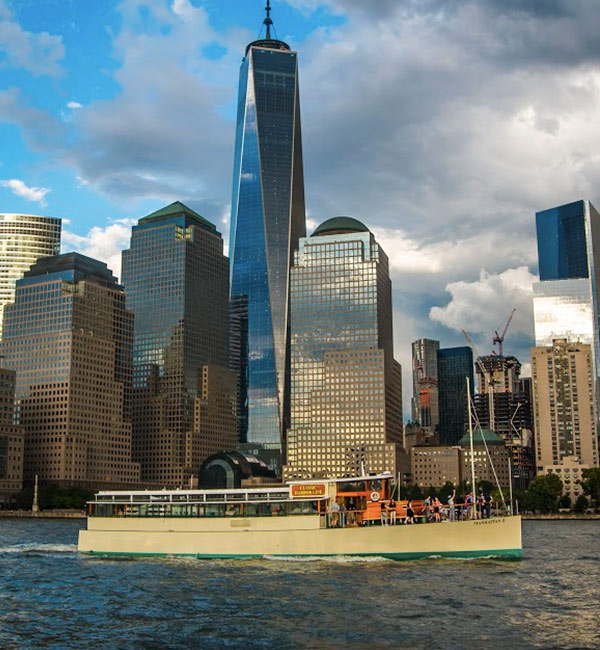
The best way to see the Manhattan skyline, are provided by AIANY guides and are scheduled almost daily. They offer visitors, locals, architecture tourists, and students insightful narration covering New York’s iconic landmarks, historic sights, modern architecture, and engineering feats including Art Deco spires, harbor monuments and infrastructure. See the Chrysler Building, World One Trade Center, the Statue of Liberty, and the Brooklyn Bridge, plus recent buildings by Frank Gehry, Renzo Piano and Bjarke Ingles, as well as other world-renowned architects. This NYC architecture tour is packed with the modern high-rise residential buildings, Super-talls, awe-inspiring structures that coat the NYC skyline!
The official NYC Architecture Cruise features are thematically linked to illustrate the transformation of NYC’s waterfront industry to booming residential development, ecologically-driven park design and resilient urban planning to accommodate storm surge and rising sea levels. The tour also covers themes related to housing and NYC infrastructure.
AIA CES 1.5 to 2.5 LU HSW Continuing Education Credits offered.
“A fabulous trip. There are many buildings in NY that are best seen from the water, and of course, the boat takes you close to the bridges. The docent was excellent – well informed, and his remarks were very well paced, giving us time to both listen and to look at the buildings (and landscape). The crew members were friendly and attentive, though never obtrusive. The boat feels quite luxurious, and there is a chance to walk around, go outside, or stay inside (the views from inside are very good. My friends and I had a wonderful time and learned a lot, and we plan to ask others to join us when we are all in NY. Very happy passengers, we were.”
– A Chicago Architecture Tour Guide
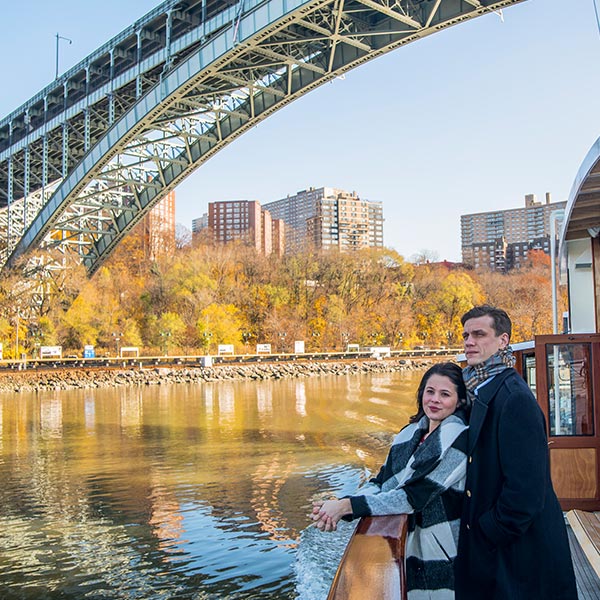
You May Also Like
Sunset Cruises
Sailing Excursions
Yacht Cruises
Sightseeing in NYC
Mini Yachts
Architecture Cruises
Dining/Pairing Cruises
Narrated Cruises
Fireworks Cruises
Music Cruises
Family Friendly
Chelsea Piers Departures
Specialty Cruises
Fall Foliage
4th of July
Live Stream

15 Best New York City Architectural Tours By Walking, Boat & Plane
By Jessie Festa & Dale P. This guide to the top architecture tours in NYC contains affiliate links to trusted partners!
Looking to book the best New York City architectural tours ?
Then you’re in the right place!
New York City has some of the most iconic architecture of any city in the world.
An architecture tour in NYC is one of the best ways to explore some of the most famous buildings in the city while learning more about their history and significance.
New York’s best-known architectural style is Art Deco, which can be seen in iconic skyscrapers like the Empire State Building and the Chrysler Building.
That being said, the city is also known for the elegant Beaux-Arts architecture of Grand Central Terminal, the New York Public Library, and the Metropolitan Museum of Art as well as the Gothic Revival style of St. Patrick’s Cathedral and the Woolworth Building, among many other architectural styles.
These styles and more can be explored during an architecture tour in New York City. Led by a licensed sightseeing guide, you’ll discover New York City’s skyline like never before, learning the history and context behind some of the city’s most famous landmarks.
Whether you take an NYC architecture boat tour or experience an architecture walking tour in NYC, you’re guaranteed to learn a lot and gain a new perspective on this iconic city.
Table of Contents
Discover NYC’s Best Architecture & Attractions [Free Guide]
But first, before we dive into our list of top New York City architectural tours, we invite you to grab a copy of Jessie’s NYC Top Picks From A Local Guide . The printable PDF guide takes you beyond the popular attractions to uncover a more local and lesser-known side of New York City.

Just a few highlights from the guide include:
- Unique restaurants and bars for creative food and drink fare
- Where to take in epic NYC architecture and skyline views
- Ways to get off-the-beaten-track to discover a side of the city many tourists miss
On that note, keep reading to dive into the top architectural tours in New York City.
Best New York City Architectural Tours On Foot
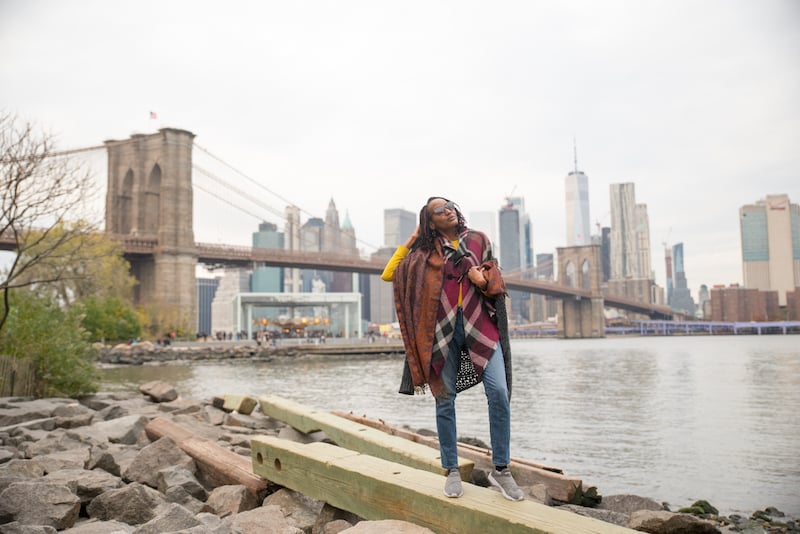
1. Private Photo Tour with NYC Architecture Views
Looking for an architecture walking tour of NYC that also includes photos? Then this experience, which is hosted by Jessie’s company NYC Photo Journeys , is for you!
Part tour, part photoshoot, you can choose between a list of carefully curated itineraries or opt to have something custom created just for you.
Best of all, you’ll leave the session with interesting stories as well as gorgeous photos of your group to keep.
If you’re specifically interested in NYC building tours, SoHo – Brooklyn Bridge – DUMBO is one recommended route that combines the beauty of SoHo’s cast-iron architecture, the skyline views of DUMBO, and the engineering marvel that is the Brooklyn Bridge — which was the first suspension bridge to use steel for its cable wire when it opened in 1833.
➡️ Click here for more information and to book .
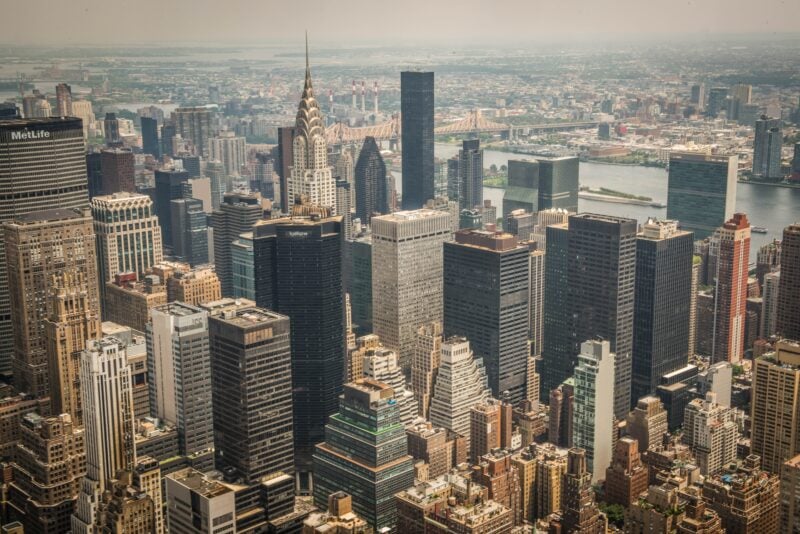
2. Manhattan Architecture Photography Tour
For amateur photographers looking to perfect their craft, this New York City architectural tour is a great way to explore the city’s landmarks and capture some amazing shots at the same time.
Led by a professional photographer, this experience takes you on foot through Manhattan to visit architectural gems like Grand Central Terminal, the Chrysler Building, and the New York Public Library.
Along the way, you’ll learn expert tips from your guide for snapping the best photos of these landmarks.
You’ll leave this top tour in New York City with a better understanding of NYC architecture and some great photos of your own.
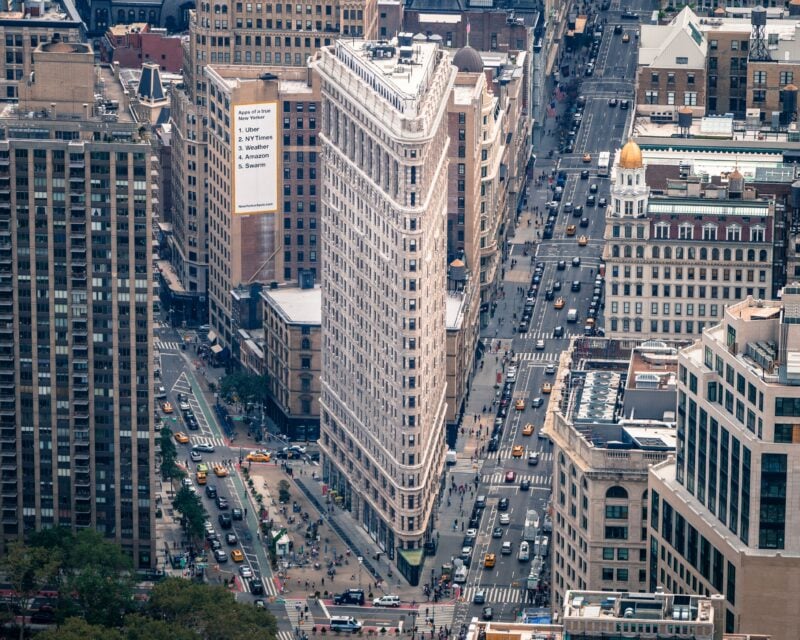
3. Flatiron Food, Architecture & History Tour
The Flatiron District is one of the most eye-catching neighborhoods in New York, anchored by the iconic Flatiron Building and Union Square.
This New York architecture tour is also perfect for foodies because, in addition to learning about the Flatiron Building and surrounding architecture, you’ll savor some of the best food the area has to offer.
You’ll be able to sample delicious New York pizza, try a famous Reuben sandwich, chow down on grilled cheese, and caffeinate with coffee and pastries at a local bakery.
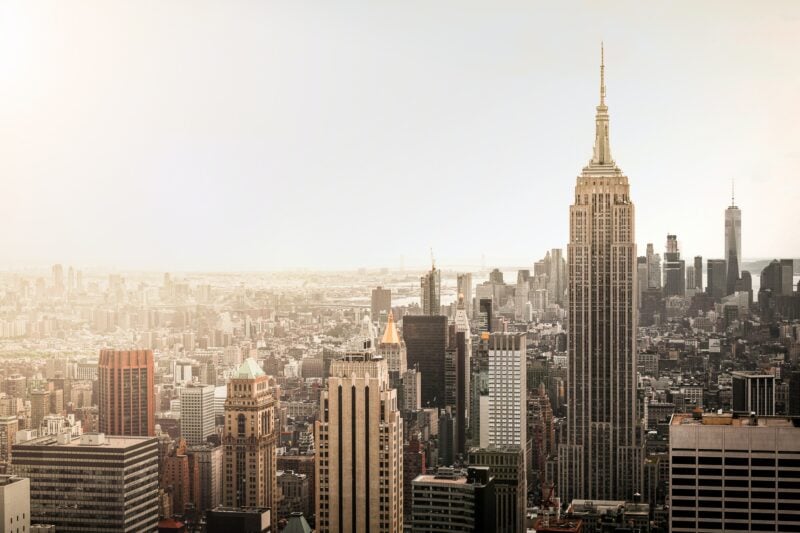
4. Art Deco & Architecture Midtown Landmarks Tour
This Art Deco tour in NYC will take you to some of the most iconic buildings in Midtown Manhattan that exemplify the Art Deco style, which flourished in New York during the 1920s and 1930s.
On this walking tour, you’ll make stops at the Empire State Building, the Chrysler Building, the Chanin Building, the Fred F. French Building, Rockefeller Center, and more.
Not only will you get up close and personal with the exteriors of these buildings, but this tour also includes many indoor stops, allowing you to really take in all of the Art Deco details.
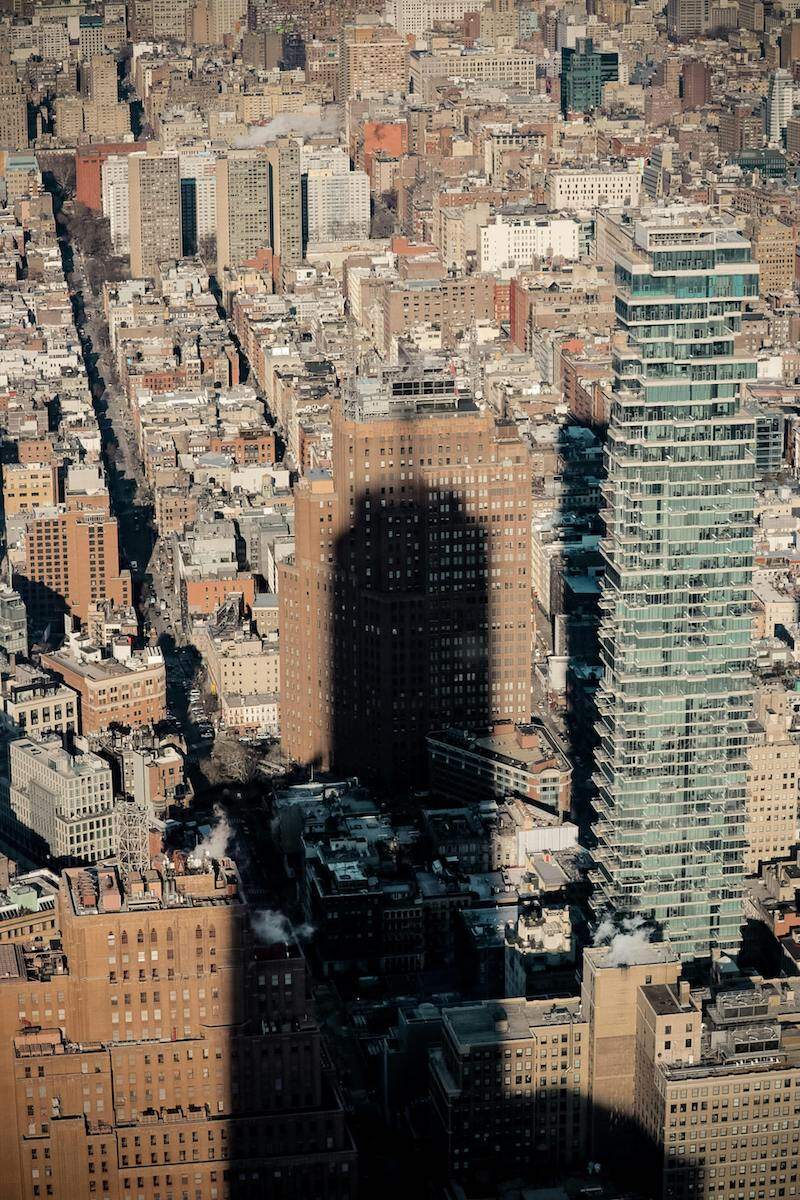
5. Tribeca Architecture & History Walking Tour
On this Manhattan architecture tour, you’ll discover the downtown neighborhood of Tribeca and its many architectural gems.
With over 300 years of history, Tribeca is one of New York City’s oldest neighborhoods.
It’s also one of its priciest, known for its ultra-luxury apartment buildings where many celebrities live.
Led by a knowledgeable guide, this excursion will take you to famous neighborhood landmarks — from the firehouse featured in the Ghostbusters movie to the striking “Jenga Building” at 56 Leonard Street.

6. Rockefeller Center Architecture & Art Walking Tour
Rockefeller Center is one of the most visited places in New York City, with millions of visitors coming every winter to gawk at the enormous Christmas tree erected in the central plaza of the complex.
Although Rockefeller Center is synonymous with Christmas in NYC, many people don’t know much else about the fascinating history of this attraction, which is anchored by the iconic Art Deco tower of 30 Rockefeller Plaza.
On this NYC architecture tour, you’ll learn more about Rockefeller Center and the murals, sculptures, bas-reliefs, and other decorative features that adorn it.

7. Secrets Of Grand Central Walking Tour
Grand Central Terminal is a grand Beaux-Arts train station in Manhattan that more than 750,000 people pass through daily.
However, few commuters and visitors take the time to stop and appreciate the details of this train station, which is considered to be one of the most beautiful in the world.
Luckily, that all changes for those who choose to book this tour, which lets its guests in on some of the site’s top secrets.
Moreover, the experience covers the intriguing history of Grand Central, from its heyday to its decline to its modern-day restored state.
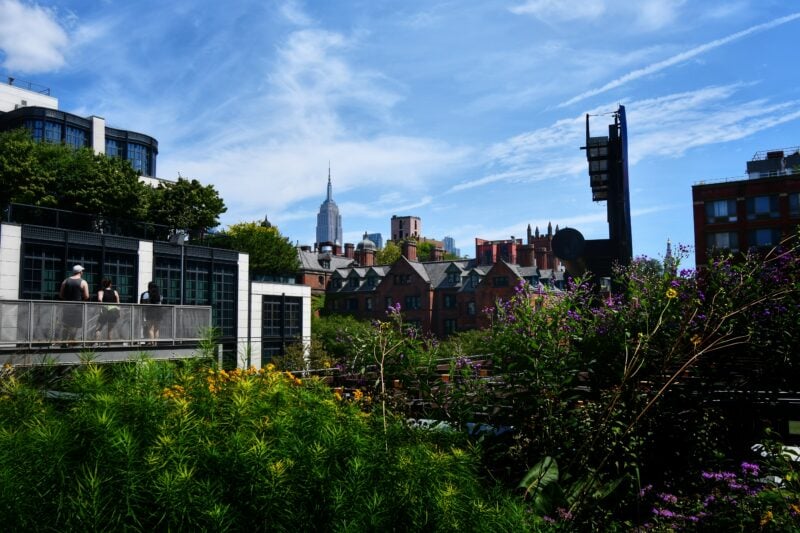
8. Chelsea Architecture & Art Tour with Award Winning NYC Guide
On this architecture tour of NYC, you’ll explore one of Manhattan’s coolest and most dynamic neighborhoods: Chelsea.
This walking tour covers notable works of architecture from famous “starchitects” like Frank Gehry, Jean Nouvel, and Zaha Hadid.
Led by a knowledgeable local guide, you’ll have the chance to explore the neighborhood on foot, including a walk on the High Line, a former elevated train track turned into a park.
You’ll also pop into several art galleries that the neighborhood of Chelsea is known for to experience the latest exhibits.
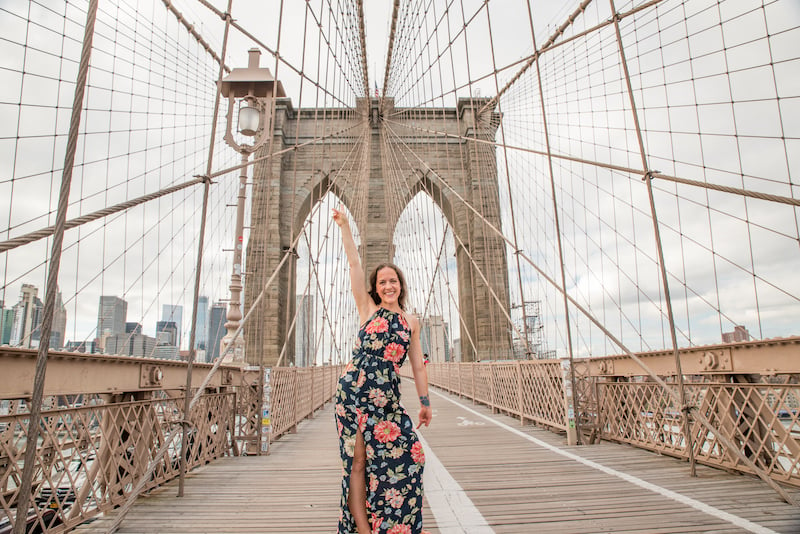
9. Secrets Of The Brooklyn Bridge Walking Tour
If you’re looking for a Brooklyn architecture walking tour, this is a great option.
The Brooklyn Bridge is one of the most striking architectural icons in New York City, and no visit to the city would be complete without taking its beauty.
On this unique tour, you’ll learn about its history, including lesser-known facts and little-known stories.
Not only that, but you’ll have opportunities to photograph this NYC architectural marvel from an array of perspectives.
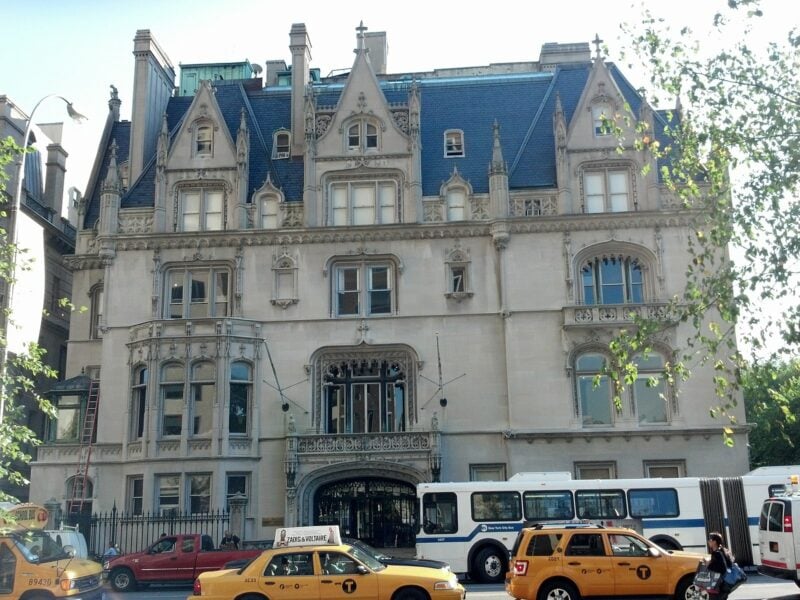
10. Fifth Avenue Gilded Age Mansions Tour
This is one of the best architecture tours in New York City that showcases the opulence of the Gilded Age that occurred during the late 19th century.
On the Upper East Side of Manhattan , Fifth Avenue was known as “Millionaire’s Row” for the wealthy families who lived in extravagant mansions lining the street across from Central Park.
This walking tour explores some of the most iconic Gilded Age mansions that still exist today, and covers the fascinating history and outrageous stories of the families who called them home.
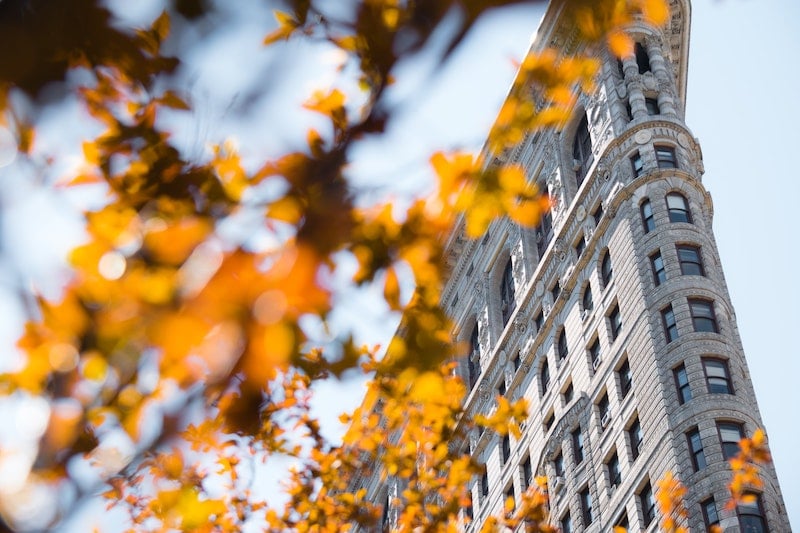
11. Iconic Architecture NYC: “Secrets of the Skyline” Exploration Game
If you’re looking for an NYC architecture tour that is self-guided, this is a great one to check out.
As you solve puzzles on your phone, the scavenger hunt-style game unlocks your next clue — leading you to some of New York City’s most iconic buildings.
You’ll discover landmark structures like the Flatiron Building, lesser-known spots like the Moxy Hotel, and the impressive works of architect Zaha Hadid on this self-guided NYC architecture tour.
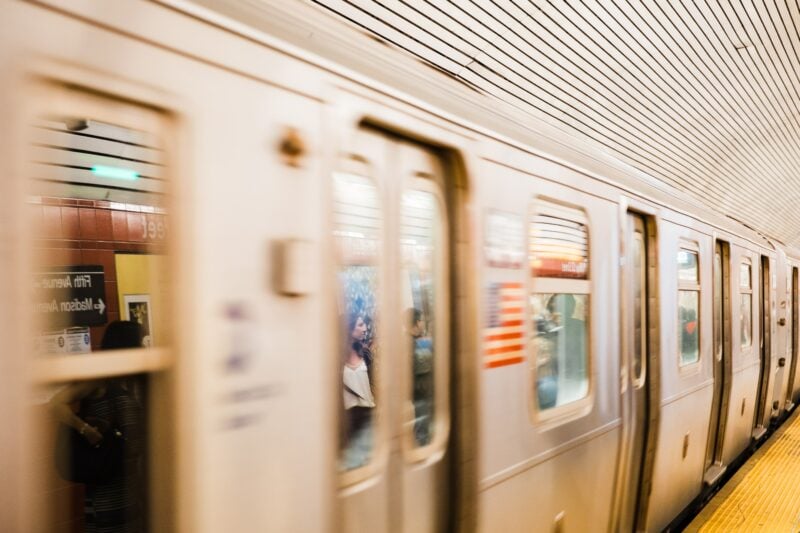
12. NYC’s Underground Subway Tour
One of the most unique New York architecture tours to book is this subway excursion that takes you underground to discover the history of the local subway system.
You’ll see remnants of the Pneumatic Transit System — the precursor to the current subway — and will even ride a subway train through the abandoned City Hall Station with your knowledgeable local guide.
Best New York City Architectural Tours By Boat
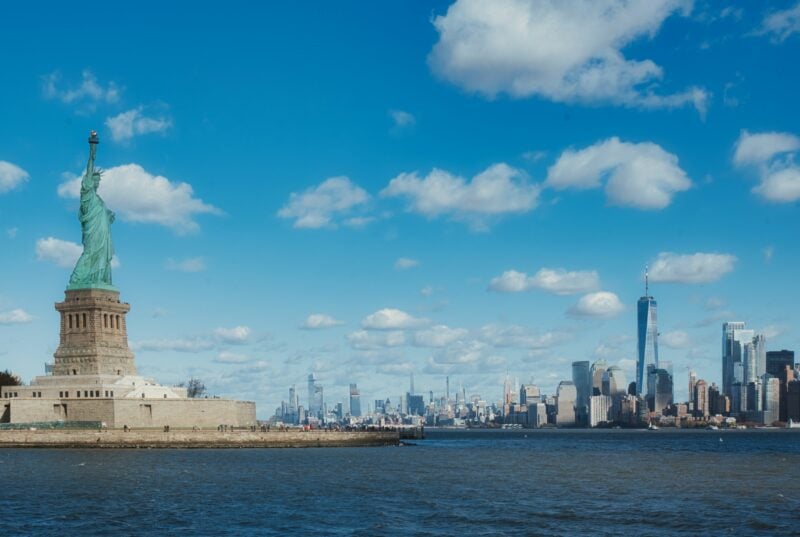
13. Statue of Liberty & Skyline Sightseeing Cruise
An architecture boat tour in NYC is one of the best ways to take in the city’s stunning architecture.
On this scenic excursion in particular, you’ll be able to discover Manhattan’s skyline from a new vantage point.
Sip an included drink as you sail down the Hudson River and through New York Harbor, taking in views of the Statue of Liberty and the Brooklyn Bridge from the solarium or open-air deck of your boat.
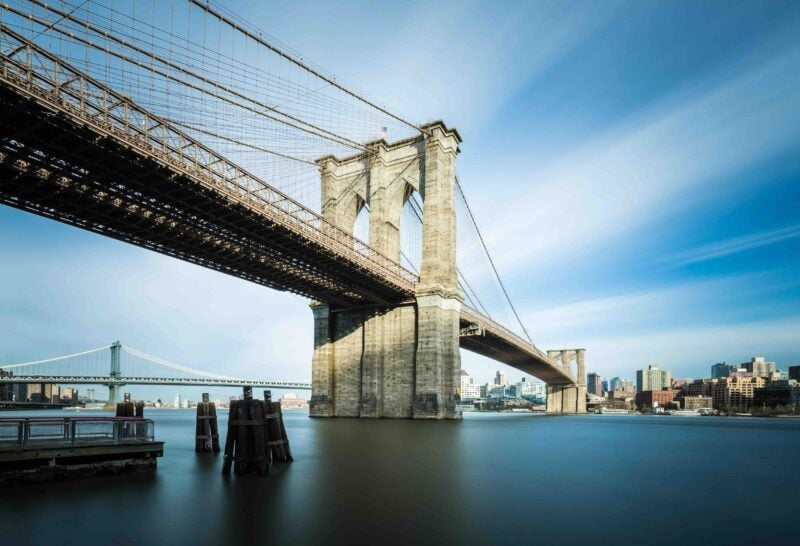
14. Manhattan Architecture Yacht Cruise
Looking for unforgettable Manhattan skyline tours ? You’ll love this top pick!
This is another great architecture cruise in NYC that is perfect for anyone who wants to gain an in-depth understanding of the city’s architecture.
Led by an American Institute of Architects-certified guide, the AINY Around Manhattan architecture cruise will take you past some of New York’s most famous buildings.
On this AIA boat tour in NYC, you’ll travel on a 1920s-style yacht as you learn about New York City’s architectural wonders.
Best New York City Architectural Tours By Helicopter
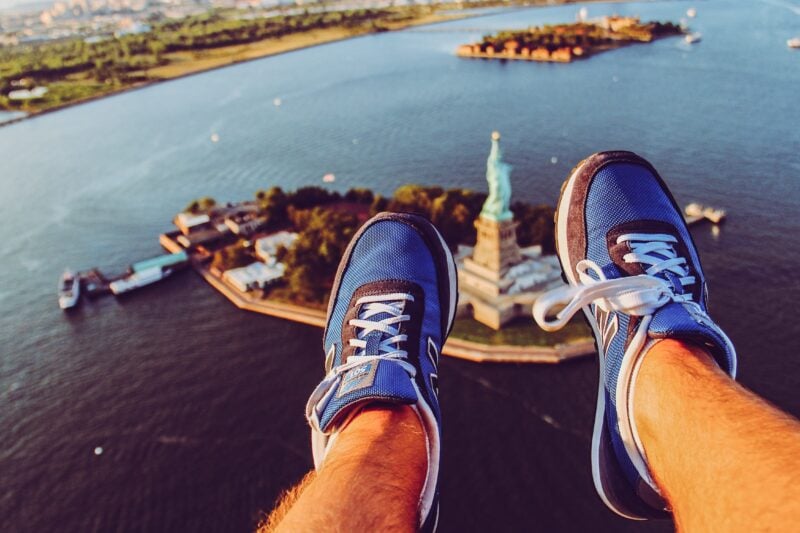
15. New York Helicopter Tour: Manhattan, Brooklyn & Staten Island
One of the best architecture tours in NYC you can take if you’re looking for a truly unforgettable experience is a helicopter tour.
Unlike regular NY architecture tours, this top-rated excursion lets you see New York from a unique vantage point: the sky!
You’ll fly high above the city on your helicopter tour, where you’ll be able to spot the spires of the Empire State Building, the Chrysler Building, One World Trade Center, and more — as well as see New York landmarks like Central Park from above.
Tips For Choosing A New York City Architectural Tour
When deciding which NY architectural tour to book, consider:
Your budget. New York City architectural tours vary greatly in terms of price. If you’re on an extreme budget, opt for a self-guided tour ( like this one ). Or, if you have a bit more money to spend, you might choose one of the many boat tours or helicopter tours that can introduce you to NYC’s architecture.
Your interests. Are you looking for an in-depth tour focused on learning about NYC architecture, or more of a laid-back excursion with great views? Consider this before booking.
Your preferred mode of transport. Do you like walking, boat, or helicopter tours? Or, maybe you’d prefer to peruse New York City limo tours that showcase the beauty of NYC? Pinpointing this can help you decide which architectural tour of New York is best for you.
Specific NYC buildings you want to learn about. Many people visiting NYC have a favorite local landmark, whether that is the Empire State Building, Brooklyn Bridge, Flatiron Building, One World Trade Center, Grand Central Terminal, or, our personal favorite, the Chrysler Building. These gorgeous buildings are some of the main reasons why NYC is so popular , too.
Of course, there are also non-touristy places in NYC where you can learn about lesser-known architectural gems, too.
For instance, did you know that SoHo is home to the world’s largest collection of full and partial cast-iron buildings in the world? That’s definitely something worth exploring on an architecture tour of New York City!
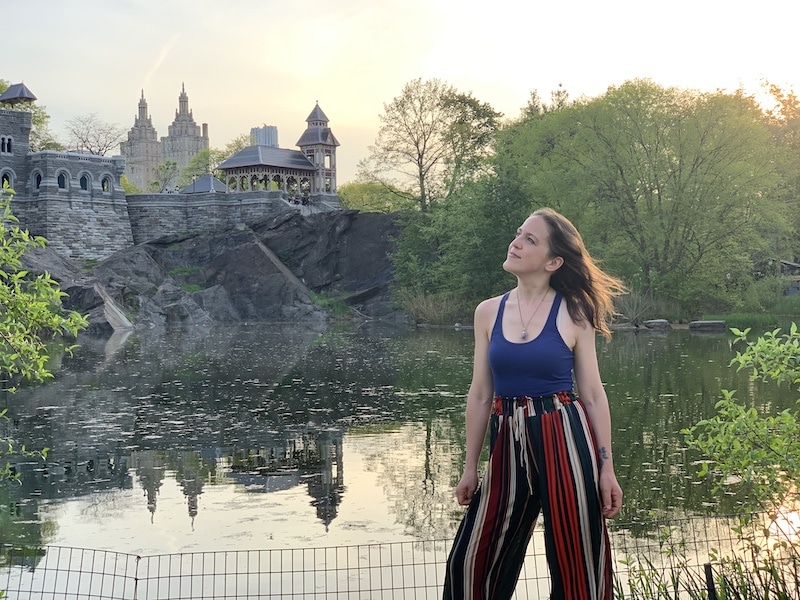
Best Time To Book An Architecture Tour In New York City
There really is no wrong time to head out on an NYC architectural tour, as excursions run year-round. That being said, there are a few things to keep in mind when choosing when to book:
To enjoy the best temperatures on a New York City architectural tour, book in fall. It isn’t as rainy as spring or summer, and the weather is often mild and sunny. Plus, the city is wrapped in a warm glow from the changing foliage, which can make for extra beautiful shots when photographing NYC’s iconic buildings.
Wondering where to take the best photos in New York City ? Head to Central Park, where you can get skyline views from spots like the Gapstow Bridge, Bow Bridge, and the Great Lawn with the colorful fall foliage in the foreground.
Additionally, if you want to avoid the crowds, the first three weeks of November tend be quieter, with mild weather making the outdoors enjoyable.
After that, the holiday season brings a huge influx of tourists. Despite the cold, visiting New York City in winter often means battling crowds of people who have come to see the holiday lights and Rockefeller Tree.
Spring and summer can also be great times to visit and explore NYC architecture. Just note that these seasons can be rainy, and summer in particular can be very hot. That being said, if you’re interested in an architectural boat tour of New York City, summer is the perfect season.
Finally, while winter can be extremely cold, the plus side is you can beat the crowds. NYC’s slow tourist season is January through March.
Hotels With Iconic NYC Architecture Views
Looking to book a hotel with views of beautiful New York City buildings? Check out the:
- William Vale Hotel
- Williamsburg Hotel
- 1 Hotel Brooklyn Bridge
Click here for a full list of New York City hotels!
Prefer self-contained stays?
Click here to check out unique local rentals!
You can also use this map to search for unique local stays. It’s currently set to Times Square, but you can easily change it to your desired NYC neighborhood:
Like the idea of hotel living? There are also numerous properties that allow you to live in a hotel full time in NYC with extended stay offerings.
New York City Travel Insurance
When visiting New York City — or anywhere else in the world — it’s wise to get travel insurance.
One of the best travel medical insurance for travelers is SafetyWing as they’ve got a large network and offer both short-term and long-term coverage — including coverage if you’re traveling for months as well as limited coverage in your home country.
Additionally, SafetyWing is budget-friendly and offers $250,000 worth of coverage with just one low overall deductible of $250.
Click here to price out travel insurance for your trip in just a few clicks .
Final Thoughts On Booking A New York City Architecture Tour
An architecture tour of NYC is a great way to explore the city and learn about some of the local landmarks and iconic sites from a licensed guide.
And no matter when you visit, you can enjoy these types of excursions.
Just make sure to book a tour that fits your interests and budget, and it can very well become the most memorable aspect of your trip!
Which of these best New York City architectural tours are you most excited to do?
*Featured image of the skyline featuring NYC architecture by Roberto Vivancos for Pexels
Related posts:
About dale p..
Dale is a native New Yorker and an NYC-based travel writer and blogger. She loves sharing insider tips about New York City travel and other destinations with others.

Hi, I’m Jessie on a journey!
I'm a conscious solo traveler on a mission to take you beyond the guidebook to inspire you to live your best life through travel. Come join me!
Want to live your best life through travel?
Subscribe for FREE access to my library of fun blogging worksheets and learn how to get paid to travel more!

Turn Your Travel Blog Into A Profitable Business
Subscribe to my email list to snag instant access to my library of workbooks, checklists, tutorials and other resources to help you earn more money -- and have more fun -- blogging. Oh, and it's totally FREE! :) // Privacy Policy .
Check your inbox for your welcome email + resource library password!
Thank you for sharing this travel related information… Columbus Tourism – Travel agent in Ahmedabad, Book the best domestic and international tour packages of your choice. We offer the best deals on holiday packages. Established in the year 2015 we are a niche travel agency providing effective tour packages and traveling services with the comfort and satisfaction of our clients being at the core of our service delivery.
Leave a Comment Cancel Reply
🙌 Awesome, you're subscribed!
Thanks for subscribing! Look out for your first newsletter in your inbox soon!
Get us in your inbox
Sign up to our newsletter for the latest and greatest from your city and beyond
By entering your email address you agree to our Terms of Use and Privacy Policy and consent to receive emails from Time Out about news, events, offers and partner promotions.
Awesome, you're subscribed!
The best of New York for free.
Sign up for our email to enjoy New York without spending a thing (as well as some options when you’re feeling flush).
Déjà vu! We already have this email. Try another?
Love the mag?
Our newsletter hand-delivers the best bits to your inbox. Sign up to unlock our digital magazines and also receive the latest news, events, offers and partner promotions.
- Things to Do
- Food & Drink
- Time Out Market
- Coca-Cola Foodmarks
- Attractions
- Los Angeles

10 fascinating architecture tours in NYC
Uncover new layers of city history on architecture tours of NYC neighborhoods such as Flatbush and Mount Morris Park
Photograph: Shutterstock/Sean Pavone

In a city where the skyline itself qualifies as one of the best New York attractions , you’d be remiss not to take an architecture tour in NYC. You’ll spy some of the most beautiful NYC buildings , including the Flatiron building, St. Patrick’s Cathedral and the Woolworth building. These walking tours in NYC all cover different architecture styles, from the Victorian homes in Flatbush to the Art Deco Chrysler Building to the brownstones in Brooklyn Heights. Reserve your spot on one of these architecture tours in NYC now and prepare to be amazed by Gotham’s landmarks.
RECOMMENDED: Full guide to New York City tours
Been there, done that? Think again, my friend.
Architecture tours in NYC
Flatiron food, architecture and history tour.

Perhaps no building in New York City stands out more than the Flatiron Building, the triangular landmark sandwiched between Fifth Avenue and Broadway. Get an up close and personal look at the iconic piece of architecture on this three-hour tour of the neighborhood. You’ll also learn a bit of Union Square history, sample local bites like the babka at Breads Bakery and have plenty of opportunities to snap photos. $50
Highlights of Midtown Architectural Tour

The Chrysler Building, Grand Central Station, Tudor City, Times Square: So many of the city’s best-known buildings are clustered around Midtown. Join this three-hour walking tour to peer up at the skyscraper spires and even step inside a few of the buildings’ lobbies. You’ll walk away with a comprehensive understanding of the Midtown’s history. $35
Victorian Flatbush Walking Tour

The name “Victorian Flatbush” is a bit of a misnomer, as the neighborhood actually includes stately Queen Anne, colonial, Tudor and neo-Revival homes. Tour the area to spot countless examples of stunning architecture, a church that Peter Stuyvesant founded in 1654 and the city’s oldest high school. This walk also offers a glimpse at the process of gentrification—a controversial topic in this neck of the woods. $25
Photograph: Courtesy CC/Flickr/ Troy Trolley
Lower Manhattan: Secrets of Downtown Architecture Tour

The oldest neighborhood in Manhattan is also the furthest south: the Financial District. Here, you’ll find taverns frequented by George Washington and other Revolutionary War soldiers, the neoclassical facade of the New York Stock Exchange, the wobbly cobblestones of Stone Street and other remnants of the 18th century. After all, if you want to see how far New York has come, you have to trace history all the way back to the beginning. $35
Tour of the Remnants of Penn Station

Grimy modern-day Penn Station doesn’t exactly seem like an architectural landmark, what with its filthy waiting areas and leaking sewage. Still, the transit hub serving more than 650,000 commuters a day is a crucial part of the fabric of this city and has been since the original building was completed in 1910. Though the first structure was demolished in 1963, you can still find a few vestiges from the past if you know where to look. Uncover some of the station’s artifacts and plenty of its history on this 90-minute tour. You ’ ll feel like an amateur archaeologist as you look for clues hidden in plain sight. $35
Harlem Walking Tour of Mount Morris Park Historic District

Not many tourists venture north of Central Park, but those looking for interesting architecture ought to. Harlem’s Mount Morris Park Historic District covers 16 blocks of Gilded Age buildings, from splendid homes to gorgeous churches. Get acquainted with the area on a three-hour walking tour of the neighborhood, capped off with lunch at a local restaurant. $65.35
Small Group Walking Tour of New York City Architecture

These three-hour tours are all led by urban planners, architects or historians who happen to also be lifelong New Yorkers—city experts twice over. Your guide will cover the evolution of Gotham’s architecture, from the late 19th century through today. Expect to see a wide variety of styles including the Beaux Arts facade of Grand Central Terminal and the ornamental exterior of Tudor City. $86
Brownstone Brooklyn Heights and DUMBO Walking Tour

Though DUMBO is just east of Brooklyn Heights, the two neighborhoods could not have more different architectural styles. Brooklyn Heights is full of brownstone townhouses built in the 1800s, an area known as America’s first suburb. The cobblestone streets of DUMBO, on the other hand, run between trendy lofts, galleries and boutiques built inside repurposed factories and warehouses. Explore both areas on a two-hour walking tour to get a feel for the western part of the borough. $24
Photograph: Courtesy CC/Flickr/ Jay Woodworth
Private Historic Tour of the Bronx from Manhattan

European settlers first came to the Bronx in the 1600s—in fact, the borough’s name comes from Jonas Bronck, the Scandinavian immigrant who first settled in Mott Haven in 1639. Trace the history of the Bronx through its architecture on this private half-day tour. You’ll visit the Grecian-style Bartow-Pell Mansion built in 1842, cross the Art Deco–influenced Triborough Bridge and even explore the quaint nautical scene on City Island. $200
AIANY Manhattan Bridges and Infrastructure Tour

New York City’s vast network of subways, streets, bridges and tunnels is nothing short of an urban wonder, when you stop to think about it. Devote a few hours to understanding the city’s bridges as you pass under each of them on a boat tour up the East River. The tour is accredited by the American Institute of Architects and led by professors from Parsons and FIT, so come prepared for a scholarly dive into city infrastructure. $78
Photograph: Courtesy CC/Flickr/ Andrea Schaffer
Looking for more tours in NYC?
The best tv and movie tours in nyc.
- Things to do
- Walks and tours

Spot Carrie Bradshaw’s stoop from Sex and the City, the Bada Bing! strip joint from The Sopranos and that famous subway grate from The Seven-Year Itch on these tours
[image] [title]
Discover Time Out original video
- Press office
- Investor relations
- Work for Time Out
- Editorial guidelines
- Privacy notice
- Do not sell my information
- Cookie policy
- Accessibility statement
- Terms of use
- Copyright agent
- Modern slavery statement
- Manage cookies
- Claim your listing
- Local Marketing Solutions
- Advertising
Time Out products
- Time Out Worldwide
Manhattan Walking Tour uses cookies to give you the best possible service. If you continue browsing, you agree to our use of cookies. More details can be found in our terms and conditions .
- [email protected]
- +1 (646) 545 8494
- Open Facebook account in a new tab.
- Open Instagram account in a new tab.
- Open Tripadvisor account in a new tab.
- Open Google account in a new tab.
New Tour Alert! SWEETS AND SCREAMS: A SUGARY SWEET GHOST WALK OF GREENWICH VILLAGE
Architecture Tour of Midtown Manhattan’s Classic Landmarks
Rediscover NYC’s historic art movements
Iconic structures and decor
Private Version of Tour Available
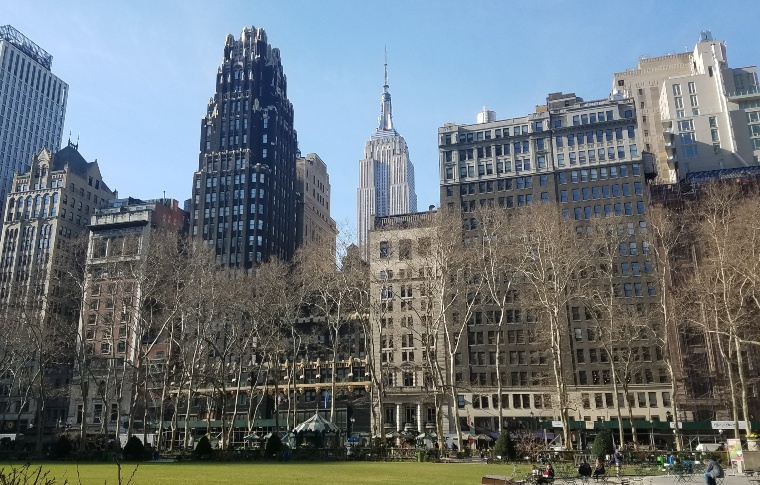
Join our team on a guided walking tour through vibrant Midtown Manhattan for quintessential New York City! Art Deco, Beaux-Art, & International Style architecture await along its picturesque avenues and streets. The neighborhood is a treasure of clustered renowned landmarks with astonishing histories, pioneering styles and enduring impact on the life of the city.
Unearth key art movements defining NYC’s stunning cityscape and skyline.
Explore distinct elements of Beaux-Art, Art Deco and Mid-Century Modern/International styles.
Marvel at extraordinary craftsmanship of materials: stonework, ironwork, metalwork and more
Learn about architects, artists, workers and inspirations behind these masterpieces.

Click the Tabs to Find Out More
Trip details.
Tours require a minimum of 2 guests to open, and then single travelers can join. If you are a single traveler, and are having trouble booking, please email or call.
Departure time
9:00 AM. Please arrive by 8:45 AM to check in with your guide before the tour begins.
Meeting point
The Pulitzer Fountain at Grand Army Plaza Fifth Avenue and 59th Street, Upon your reservation, you will receive a confirmation with exact details, maps, and best mode of transportation to get to your meeting point
Availability
Daily, 9 am – 12 pm.
*Custom times can be requested with a minimum of 4 guests
Approximately 3 Hours
All tours are semi-private with 10 people or less
Participation requirements
It is a walking tour for 3 hours, but comfortably-paced along major picturesque avenues within Midtown Manhattan. Restroom and seating stops are available along the way.
We recommend sneakers, hiking shoes, and waterproof boots on rainy days. Make sure to dress appropriately and bring anything you will need…..gloves in the winter and sunscreen in the summer.
Approximately 2.5 – 3 miles of total walking
Grand Central Terminal
What You’ll Do and See
The phenomenal transformation of Midtown Manhattan into a world-renowned cityscape of iconic structures in the first-half of the 20th century still leaves anyone in rapt astonishment. Our tour highlights around 20 architectural landmarks that rose within a span of a few remarkable cultural decades, energizing and electrifying a once-undisturbed residential area into the world’s cultural, communications, and business center without peer.
Learn about the unique and influential forces that created the Beaux-Arts classics of the Gilded Age, the Art Deco masterpieces of the Jazz Age, the MidCentury Modern/international glass titans of the post-World War II years. Within steps of each other, these edifices invite us to not only take an exhilarating look at awe-inspiring and thought-provoking expressions of an era’s creative innovations and collaborations. but to delve into social worlds of their time, as we imagine lives among the Astors, the Great Gatsby, and the Rockefellers.
Whether you just want to leisurely absorb the sites profiling a majestic skyline, or deeply immerse yourself in the details of art, architecture and history, our tour invites a conversation with the city itself! For first-time visitors, returning guests, or long-time residents, there are always more layers to discover that make for more moments of serendipity.
Frequently asked questions
Our 3-hour walk covers around 20 of Midtown Manhattan’s famous architectural landmarks, all within walking distance of each other. They include well-known edifices like the Plaza, New York Public Library, Grand Central Terminal (Beaux-Arts); Rockefeller Center, Chrysler Building, Radiator Building, Chanin Building (Art Deco); Seagram Building, Lever House, UN Secretariat (International Style), and more!
This is a great guided stroll along Manhattan’s most picturesque avenues for a family, offering many photo-taking opportunities. Since we will be moving for the whole 3 hours, please make sure all family members can handle this much activity. There will be restrooms and seating stops available along the way.
Check Out What Our Guests Are Saying
Happy client.
My wife and I have done a lot of guided tours, in a lot of different places round the world. I don’t think we have ever had a better one – and we’ve had some pretty good ones!
We had limited time in New York so booked 3 tours in one day, a package which works very well. I can’t recommend Manhattan Walking Tours more highly to get to see and know New York as a local.
In between all stops Alex taught us loads about the culture and history of the local area, making the trip really interesting – he knew the city like the back of his hand! I would definitely recommend taking a tour with these guys, you won’t regret it.
You May Also Like...
High line walking tour, private: grand central indoor food tour, greenwich village food tour + historic downtown walking tour.
- Top Destinations
- Mexico City, Mexico
- Tokyo, Japan
- Paris, France
- Rome, Italy
- London, United Kingdom
- All Destinations
- Upcoming Experiences
- Private Walking Tours
- Small-Group Tours
- Tours for Kids
- Museum Tours
- Food, Wine and Market Tours
- Newly Added Tours
- Audio Guides
- Pre-Trip Lectures
- Admin Dashboard
- My Favorites
- Cookies Preferences
- Client Orders
- Monthly Commissions
- My Advisor Profile
- Advisor Toolkit
- Guide Dashboard
Credit Balance
Transactions are based on current exchange rates and performed in USD. There maybe slight variations in the price estimates.
Architecture Tour of New York

- New York Public Library
- Chrysler Building
- Grand Central Terminal
- Times Square

- Traverse 42nd Street from East to West
- Led by an architecture or history expert
Itinerary Details

Reviews can only be left by Context customers after they have completed a tour. For more information about our reviews, please see our FAQ .
You May Also Like
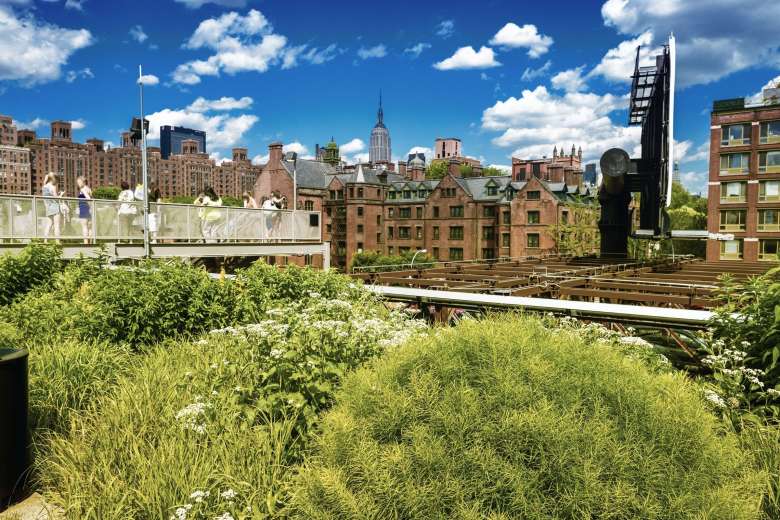
New York High Line Tour

Greenwich Village Tour: Arts, Activism and Social Justice
Book a tour.
- Our Experts
- Working with Context
- View All Cities
- Sustainable Tourism
- Refer a Friend for $50
- Travel Updates
- Advisor Login
- Expert Portal
Subscribe to our Newsletter
- Privacy Statement & Security
- Cancellation Policy
ARCHITECTURE TOUR BRAZIL: SÃO PAULO, BRASÍLIA, BELO HORIZONTE, INHOTIM & RIO DE JANEIRO
Architecture tour japan: tokyo - odawara - naoshima - teshima - kyoto, a plus nyc --- art and architecture tours by design professionals.
Our tours are for professionals as well as for lovers of modern and contemporary art and architecture and are offered in both English and German, as well as in other languages upon request.
For updates on current events on contemporary architecture in New York follow us on Facebook .
a plus nyc is member of Guiding Architects , an international network for architectural guided tours by professionals.
- AIA New York
- Center for Architecture
- Login --> Login -->
AIA New York and the Center for Architecture offer a wide variety of architecture tours for all audiences, across New York City and beyond. See tour options in each category below.
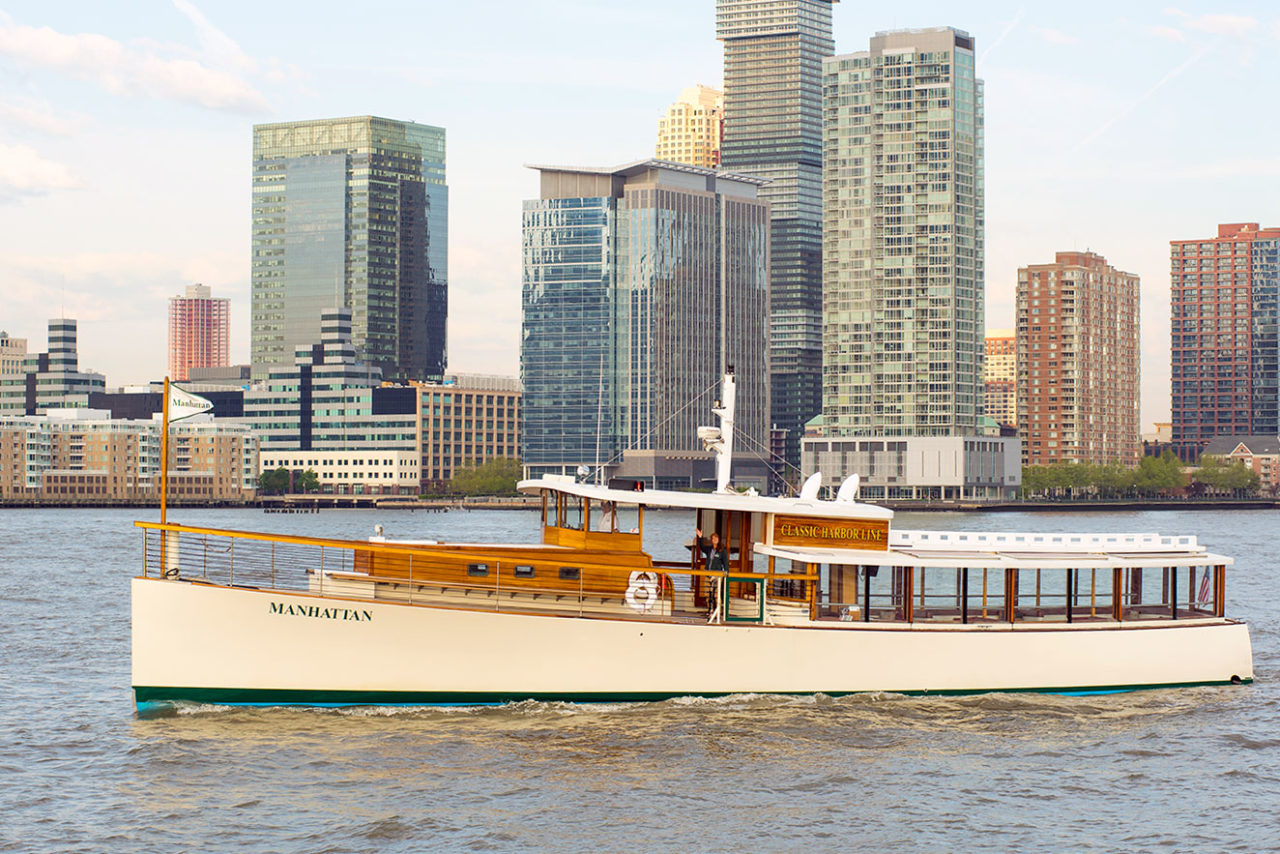
BROWSER UPGRADE RECOMMENDED
- Internet Explorer
- Google Chrome
Sign up on TourScanner
Don't know where to start, best places to visit in new york city, tours and things to do in new york city, best day trips from new york city.
.png)
Learn more about us
Archtober is a NYC-based platform that promotes the discovery of architecture and design.

Discover all things
Architecture with, year round events., interactive guides., timely content..

Pride at NYSID: Aaron Cobbett Talks Queer Visual Culture

Yorkville’s German Broadway

Designing Type for Accessibility

Travel To: The Clark Institute
.png)
Environmental Legacies: How the War of Independence Affected the Natural World in Predictable and Surprising Ways Lecture

Life Cycles: The Materials of Contemporary Design

Sonia Delaunay: Living Art
%202024%20Susan%20Wides_7451.jpg)
Peter Halley In Collaboration With Steph Gonzalez-Turner
Stay in the know.
Join our monthly newsletter spotlighting events, content and more
.jpg)
Exhibitions
.jpg)
Select partners
.png)
Take home a piece of the festival. Choose from the current collection and explore past designs. We've got shirts, hats, tote bags and more!
Explore our core
Self-guided experiences, tours with bloomberg connects.
Discover exclusive content and listen to commentary from the architects behind a selection of past Buildings of the Day on our mobile guide on Bloomberg Connects, the free arts and culture app.

Destinations with Archtober Map
Our mobile Archtober Map to New York highlights museums, historic homes, iconic architecture, parks, restaurants, and much more for you to experience on the go!

Things to do with Anytime Activities
Anytime Activities are DIY-style resources and self-led activities from Archtober partners that can be done at your leisure. Check out kid-friendly lessons, printables, videos, exhibition guides, and more.

Join our monthly newsletter spotlighting events, content, and more.
Archtober is a NYC-based platform that promotes the discovery of architecture and design through experiences and content, culminating in a month-long festival every October.
Find anything you save across the site in your account
- Walking Tour
How NYC’s Most Dangerous Street Became a Popular Public Park
Released on 06/17/2024
[passersby chattering]
This elevated green space
weaves through dozens of buildings
by some of the world's most famous architects.
But none of this would exist
if it weren't for hundreds of deaths
on 10th Avenue nearly two centuries ago.
I'm Nick Potts, I'm an architect,
and today we're doing a walking tour
of the Highline in New York City.
[downbeat music]
This is the Highline Park in New York City's
Meatpacking District.
This is a neighborhood that got its name
from the industry that it once served,
which provided beef, veal, pork to markets and cities
all throughout the northeastern United States.
It also had a lot of railroad traffic
that originally was at the same level of the street,
which turned out to be quite dangerous.
Back in the 1800s, early 1900s, this area was known
as Death Avenue,
and several hundred people actually lost their lives
due to collisions with trains.
Because of this dangerous situation,
the city eventually built an elevated rail line
to permit the huge scale of industrial production
to coexist with the street level activity
of an active neighborhood within a growing metropolis.
After its decline as an industrial neighborhood
in the middle of the 20th century,
this neighborhood searched for a new identity.
The redevelopment of the Highline
from an abandoned rail line to a vibrant green space
catalyzed more development in the last 15 years
in this part of New York City than anywhere else.
It's really a unique situation
to have this concentration of contemporary buildings
designed by star architects in one area.
And without the Highline,
none of these buildings would've been built.
Behind me is the Chelsea Market.
But if we take a bit of a trip back into history,
the reason why the Highline as a rail line existed
was because of a building like this.
This was the Nabisco factory.
And so because this was an industrial district
prior to its current form,
a lot of the buildings around here would've been
similar to this,
multi-level industrial warehouse buildings
connected to the Highline
and connected the goods being made in this building
into the rail system in the country.
You can see there are these sky bridges that connect
horizontally from site to site
in these very authentic relics of its industrial past.
As the meat packing industry
and industrialized food production moved elsewhere,
this neighborhood went into decline
and relics that were left really contributed
to its decline further and further.
And it took the redevelopment of places like
the Chelsea Market and the Highline itself
to really kind of bring people back
and take what had been a bit of an urban liability
and turn it into an asset.
In terms of the redevelopment of the Chelsea Market,
it was a bit of a pioneer.
It was one of the first projects in the country
that kind of took advantage of these disused
industrial sites
and turned them into commodified marketplaces,
kind of glamorizing the grit.
Rusted steel, exposed brick,
this kind of romanticized industrial style.
And so a lot of those warehouses, buildings
kind of remade themselves into new spaces
within their existing forms,
spaces for creative industries, for film studios,
originally for art galleries.
There are people like Diane von Furstenberg,
who very early came into this neighborhood
and built a headquarters in a studio and
the sorts of things that showed up in this building.
Because it was converted into a market,
it really planted the seed for retail
within this very small footprint
of what used to be an industrial neighborhood.
Behind me is 520 West 28th Street.
This is a building designed by
British-Iraqi architect Zaha Hadid.
This is an example of what we would call
a designer building.
It's a phenomenon that you see pop up again and again
around the Highline.
In the 15 years since the Highline opened in 2009,
it's attracted a collection of buildings
from the most famous architects practicing in the world.
People like Frank Gehry, Jean Nouvel,
Jeanne Gang, Shigeru Ban.
It's almost like a collection of designer clothes
in a fancy department store.
It's a phenomenon that's really unique in New York City,
to have this level of famous architects
working in one area,
and it's all enabled by this very famous, very public space,
the Highline, that catalyzed all of these
luxury developments.
These buildings are really about a brand
and they're about a premium product
being marketed to buyers,
both from New York and globally.
You think about a building like 520 West 28th,
which is an apartment building,
and this very public element
in this aspect of people taking pictures of your building
while you're inside of a very private,
you know, intimate space
is really engaging in this game of urban peacocking of,
you know, it's a private building that wouldn't exist
without existing on a very public right of way.
And it's showing off in a very kind of ostentatious,
you know, look-at-me sort of way,
but it's still encompassing and holding a lot of
very private spaces.
So, like a lot of designer goods,
there's almost an aspect of look-but-don't-touch with this.
None of the buildings on the Highline
can be entered from the Highline.
So you're looking, you're interacting visually,
but you're physically not permitted.
The buildings are actually separated.
None of them touch.
You don't have doors going onto the Highline.
And so the relationship that these buildings have
is purely visual.
You're looking at it as an amenity,
but you're physically not engaging with it.
[gentle music]
Behind me is the Whitney Museum of American Art.
And in terms of location,
the Whitney is also the first building a person encounters
as they enter the Highline from the south.
It's this very kind of opaque building
that doesn't really engage
with this amazing linear realm
that the Highline has created.
Really, the Whitney was trying to, you know,
add their piece as a public building,
as opposed to the private architect buildings
that the rest of the Highline has.
This is kind of your standard approach
when you're building a new museum,
is to attach a name to it.
Here it's Renzo Piano.
This is after the Chelsea Market.
This is after kind of the first phase of
kind of the retail takeover of this neighborhood happened.
But what's interesting about it is
partially how it references the industrial history
of this site.
It's almost appropriating the language of a factory,
here in a very vertical form.
You can see the vertical, aggressive,
almost industrial expression of the building,
which is a fairly interesting expression for an art museum.
The Whitney really doesn't showcase
anything about what's going inside the building.
It looks opaque, it's kind of mysterious.
The only time that you really engage with the Highline
is when you're inside the Whitney,
looking down from the balconies
or from space at the ends of the galleries
that are designed to look out over the Highline.
As the most public building on the Highline,
it's interesting to think that it's also one of
the most unapproachable and severe.
Would it have made sense to be
a little bit more public facing,
be a little bit more welcoming?
Over my shoulder is Hudson Yards.
It's a 15 million square foot development
at the northern end of the Highline.
The Highline grew from south to north,
starting around 14th Street.
Here we're at 30th Street,
and by the time this was ready to be built,
it was very apparent that the West Side
could take a development of this size.
Because the Highline was so successful
in bringing people and bringing money to this area,
developers decided to go big
and to create this major commercial,
residential, and retail development
right here at the northern end of the Highline.
Here at 30th Street, this is really where
the spur of the Highline connected back
into the train network.
If you think back to the origins of this place,
everything behind me was originally
essentially a parking lot for trains,
ringed by a ramp that brought the trains
that ran on the Highline up a level
to separate them from the street grid.
At Hudson Yards, they were able to raise the ground plane
up to the level of the highline.
It's really the reconnection of the pedestrian flow
that the Highline enables
into the new shopping center,
into the new public plaza.
Where the Highline originally connected the trains
back into the the train network,
now people, essentially, have taken on that role.
Through this direct connection from the raised level
of the Highline
to the raised level of Hudson Yards.
You think about The Shed,
you think about these giant towers,
you think about the Vessel,
you think about these mega developments and this mall.
It was all really made possible
by the proving of the thesis of the Highline,
which is that these designer buildings,
these kind of mini branded moments,
can coalesce into an intense, vibrant, urban setting.
And over the last 15 years,
the success of the Highline really catalyzed
the complete redevelopment of the Meatpacking District.
The Highline has really proved itself out,
and the fact that the Meatpacking District and Hudson Yards
have been the center of development
in the largest redevelopment project in Manhattan,
it's really because of the seed that was planted
with the Highline.
For more stories about how architecture
can transform our built environment,
check out our other episodes of Walking Tour.

Architect Reveals Hidden Details of Washington, D.C.

Architect Reveals Hidden Details of Brooklyn

Architect Reveals Hidden Details of Georgetown

Architect Explores New York City's Greenwich Village

Architect Explores New York City's Upper East Side

Architect Explores San Francisco's Distinctive Styles

Architect Explores Chicago's Hidden Architecture & History

Rockefeller Center, Explored & Explained

Architect Explores Chicago's River North Neighborhood

Architect Explores Wall Street's Details & History

How SoHo NYC Became The Cast Iron District

Architect Explores Downtown Los Angeles’s Diverse Architecture & History

Why The World’s Tallest Apartment Buildings Are On The Same Street

How Walt Disney Concert Hall Was Designed To Be Pitch Perfect

How The Upper West Side Revolutionized NYC Apartments

Architect Tours New Orleans’ Most Haunted Houses

How Central Park Was Created Entirely By Design and Not By Nature

Architect Breaks Down 200 Years of NYC Mansions

Trending video

Inside an Enchanting L.A. Home That Looks Straight Out of a Storybook
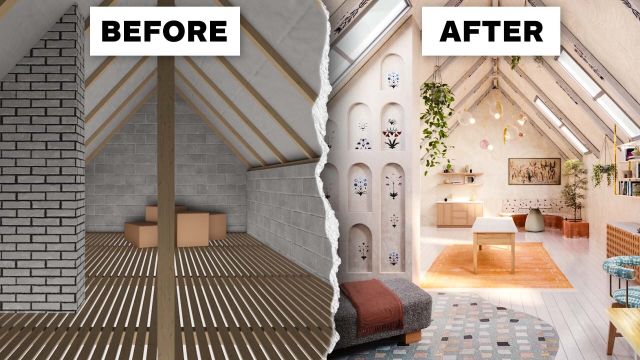
3 Interior Designers Convert The Same Attic Space into a Home Office
- AIA New York
- Center for Architecture
- Login --> Login -->
RESCHEDULED – Walking Tour: The Architecture of Madison Square Park
This tour which was originally scheduled for Sunday, June 30 has been rescheduled to Saturday, June 29. Those interested my register here
As the city moved rapidly northward in the 18th century, a series of small parks were established, anchoring neighborhoods such as Washington Square, Union Square, Madison Square, and Bryant Park.
In 1847, Madison Square Park (named for the fourth U.S. President, James Madison) was established as a residential neighborhood but quickly became a center for larger commercial and entertainment buildings. Today, it boasts a lively mix of insurance, finance, design, and residential uses. The park lays claim to home of the original Madison Square Garden, the founding of baseball, and the very first Shake Shack.
Early skyscrapers like the Flatiron Building, Metropolitan Life, and the NY Life Building will be discussed, as well as the architectural legacies of Stanford White, Daniel Burnham, Napoleon LeBrun, and Cass Gilbert.
Guide: Joseph Lengeling, AIA
Health and Safety Guidelines: AIANY cannot be held liable and assumes no responsibility for any injury or loss incurred by participants in these programs. Tour is limited to 17 attendees. Walkups cannot be guaranteed a spot on the tour.
Cancellation Policy: AIANY Walking Tours take place rain or shine, please dress for the weather. There are no refunds, cancellations, or exchanges, unless we cancel a tour.
Save The Date

- Jul 09, 2024 Annual Golf Classic 2024
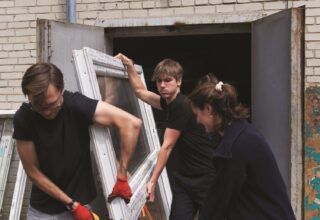
- Jul 10, 2024 Constructing Architectural Networks: Ukraine
- Sep 06, 2024 Cocktails & Conversation: LEVENBETTS
BROWSER UPGRADE RECOMMENDED
- Internet Explorer
- Google Chrome

Architectural Digest
Tour a Light, Bright, and Modern Home in Upstate New York
Posted: November 22, 2023 | Last updated: November 22, 2023

In one of the better-preserved historic communities on the Hudson River, main street is a veritable survey of American house styles. One bend in this thoroughfare is so thick with period-spanning architecture that an onlooker could initially miss the charming gardens or soaring Catskill Mountains that frame the view. An Italianate-style residence within this huddle was recently modernized by the New York–based AD PRO Directory firm Lang Architecture to strengthen its occupants’ relationship with the landscape—and add a contemporary flourish to a hamlet fabric of Queen Anne turrets and Carpenter Gothic gingerbread.
The married couple, a renewable energy developer and a media executive, acquired the 1863 residence as a second home almost a decade before the pandemic shifted New Yorkers’ migration to the Hudson Valley into high gear. The husband explains that connecting to the outdoors was one motivation for the purchase: “My existence on the East Coast has mostly been in cities, and coming up here I realized how much I was missing nature and mountains.” The wife adds that the couple oversaw a “radical overhaul on the taste front” inside the house in 2012 yet, wanting to move in quickly, “we decided to shelve the larger projects and time then just rolled merrily by.”
Ultimately the couple prepared for a second phase of renovation, focused on the north-facing rear of the building, which would yield a new mudroom and kitchen as well as less tangible outcomes, like more interior daylight and a greater sense of logic. About the latter, the media executive explains, “The back of the house was where a lot of not-great decisions had been made. The secondary entrance never really looked like it belonged to the house while the inside wasn’t quite gelling. It needed a complete rethinking.”
Feeling unhurried this time around, the homeowners vetted multiple design studios to accomplish their goals. On visiting the firm and its namesake founder, Drew Lang, she recalls, “He had a way of creating a modern interpretation of a building without it seeming stark or sterile, and we wanted a reinterpretation that would allow the place to find a new kind of expression of itself.” Her husband adds that Lang seemed like a kindred spirit, as he saw the architect “light up as we were talking through this idea of opening our experience to the landscape.”
After signing on to the project, Lang recalls, “We explored how the rear could be reconfigured, to become what the house really wants it to be.” That meant eliminating a large fireplace that had blocked daylight and sightlines, as well as moving the secondary entry to appear like an extension of a corner of the building rather than a protuberance on its side. Lang’s team largely performed surgery within the existing footprint. After the fireplace removal, the most palpable example of that work involved deleting a service stair and the slimming down of an adjacent ground-floor bath into a powder room.
“It allowed us to expand the mudroom and kitchen and capture functional space for the coat closet, pantry, and refrigerator, which also improved the flow from front to back,” Lang says of the extraction. The changes also allowed a rethinking of the primary suite upstairs: “We could create a coherent and distinct space that included its own vestibule, as well as a nicely sized bedroom and closet.”
Lang integrated a deck into the rear and lined the north elevation of the house in windows and sliding doors. The visual and physical connections between interior and outdoors are seamless—and, from some viewpoints, seemingly disappeared—as a result. Structural steel made the expansive glazing possible, while a sunken landing carved away from the deck where it meets the new entry volume creates a distinction between interior and exterior programs. “The interlocking walls and volumes are so clever,” the media executive says of the split stairs, to which Lang responds, “There was definitely a playfulness involved in that decision.”
Play of another sort was on Lang’s mind as the collaborators hatched a strategy for the rear of the property. Although husband and wife had thought that a vintage barn and adjacent studio on site could be adapted for new purposes, their deeper exploration with the architect revealed that the outbuildings were obsolete beyond repair. “Drew then thought of a pool and that opened up a whole new way of thinking about the outside,” she says, adding that the old-and-new design conversation taking place at the house felt more resolved with the backyard destination completing the setting.
Lang further notes that he envisioned the pool more as a metaphorical comma than a period, “because pools can so easily be disruptive visually. Our challenge was to nestle this new program into the landscape.” The pool appears freestanding yet low-slung, and becomes almost inconspicuous when its surrounding hillside of Pennisetum Foxtrot and Calamagrostis Karl Foerster grasses reach full height for the season.
In addition, the pool employs similar planks as the back deck while introducing poured concrete to the project palette. “The shift from one material to the next, as you move from the building to the landscape, is a series of distinct expressions and experiences in relation to the historic architecture,” Lang reveals. The renewable energy developer agrees that the sequence is palpable, adding, “It feels like an organic progression, going from the walls of the house’s front section to the semi-walls in its back to the full openness of the deck.” He also notes, “I still cannot get over the big windows looking outward, and I’m especially mesmerized when the birds are active. The deck and the pool offer completely different angles to the Catskills too. This project has tripled our experience of the landscape.”
Lang reciprocates the praise, calling his clients role models for the current wave of movement into the Hudson Valley. “We don’t get many opportunities when someone wants to be a steward of a historic building and very clearly embraces modernism at the same time. I find it refreshing and exciting, and I think it’s emblematic of what we’re going to see more of.”
Sign up for our newsletter to get the latest in design, decorating, celebrity style, shopping, and more.
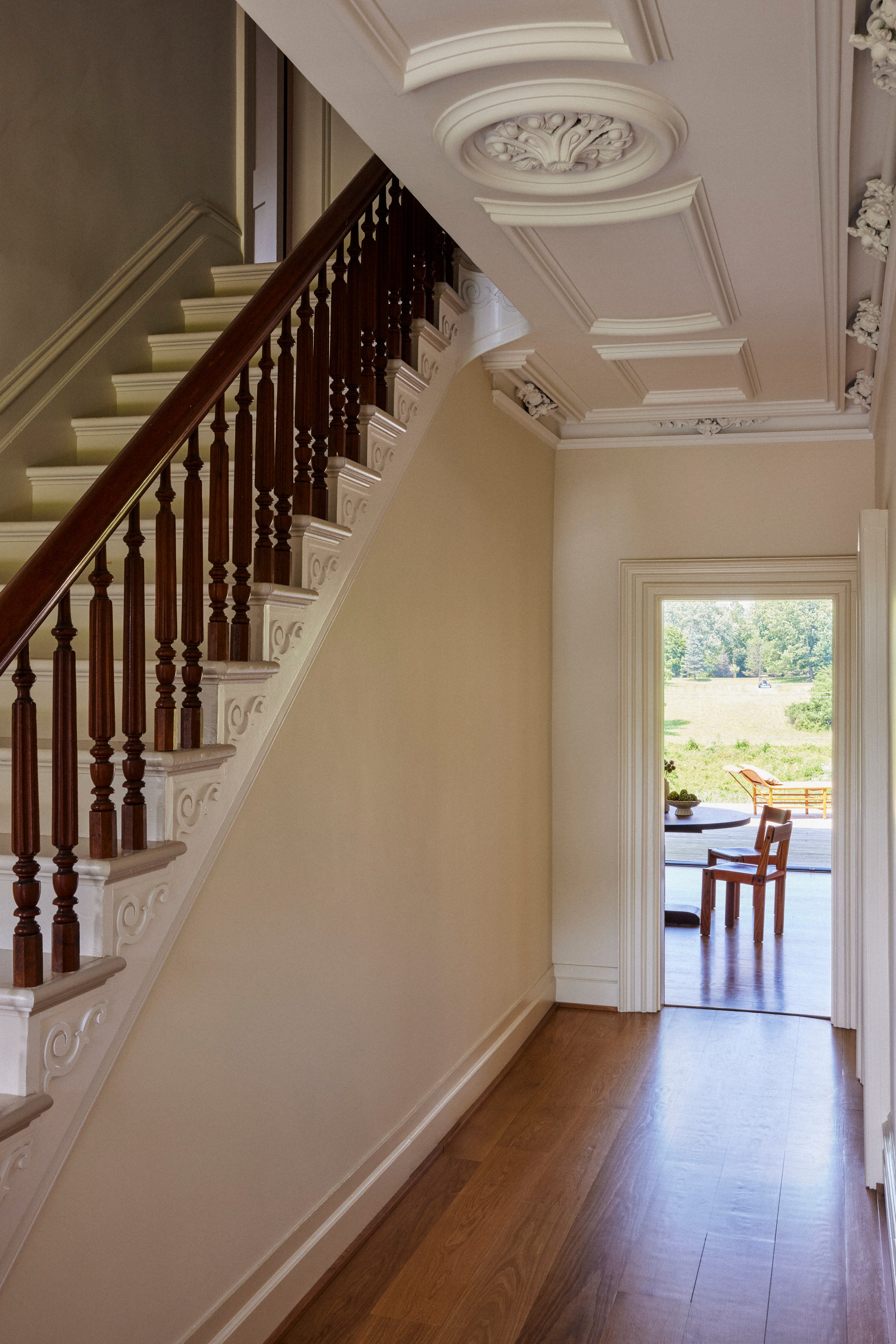
More for You
George Stephanopoulos departs GMA after brief return as all three main anchors are replaced in biggest shake-up yet
Simon Cowell floored by heavy metal 10-year-old on “America's Got Talent”: 'You turned into this rock goddess'
The FDA has issued a nationwide recall of over 13 ice cream brands
This Social Security Spousal Rule Is Officially Finished in 2024 — But These 3 Strategies Remain
Scientists unveil optimal age for being alone and avoiding relationships
Homeowner Spots Two Women Using His Outside Chairs, Decides To Take Action
Scientists Think They've Found a New Cause of Type 2 Diabetes
Fact Check: Posts Claim Angel Reese Is Facing 'Financial Turmoil' After Losing $50M in Endorsements. Here's the Truth
What Those Colored Circles on Food Packages Actually Mean
Russell Wilson's Offseason Transformation Triggers Online Buzz
7 Worst States To Buy Property in the Next 5 Years, According to Real Estate Agents
The 5 most common deathbed regrets, according to a palliative care nurse
World's Largest Cruise Ship Catches Fire
King Charles makes big royal change after years of controversy
3 pieces of information you should never share in a job interview and what to say instead, from a recruiting manager
The Alaskan Mega Tsunami Taller than the Empire State Building
‘I’m 59 and do not have any money in retirement’: Bookkeeper from Florida joins growing wave of American seniors heading for a broke retirement. Dave Ramsey sees a solution
An Indestructible New Alloy Is Defying the Limits of Metal
I Was in Horrific Pain for Decades. In Six Weeks, My Life Changed
This Serene Home Is Located on a Private Louisiana Lake and Looks Like a Glassy Riverboat
- AIA New York
- Center for Architecture
- Login --> Login -->

Join us Thursday, June 27, 6–8pm. Offers 1.5 LU/HSW.
It only takes 5 minutes

- 6/26/24 | Chapter News AIA New York Elects 2025 Leadership and Honors Community Achievements at 157th Annual Meeting
- 6/26/24 | In the News In the News: June 26, 2024
- 6/26/24 | AIA National News AIA24 Conference Brings Together 15,000 AEC Professionals in Washington, D.C.
Newsletter Sign-up
Upcoming Events
- Wed, 6/26 | Continuing Education Design Without Construction Phase Services

See AIA New York's wide array of architecture tours, including Boat Tours, Walking Tours, and Building Tours.
Competitions & Grants

See all available AIA New York Competitions and Grants, including open calls for entry.
Awards Archive
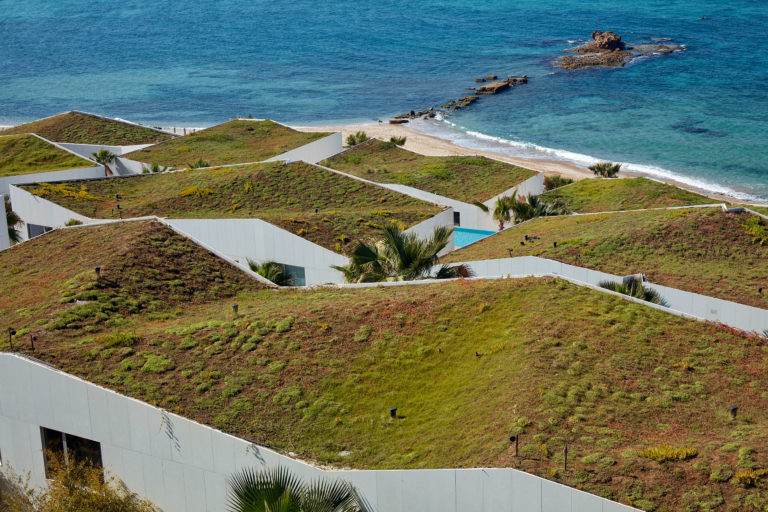
Browse the winners of past awards and competitions organized by AIANY and the Center for Architecture.
Featured Projects

See award-winning architecture, design, urban planning, installations, and research projects.
- Contract Documents
- Continuing Education
- ARE Prep/Licensing
- Member Directory
- Fellows Directory
- Firm Directory
- Company Directory
Oculus Magazine
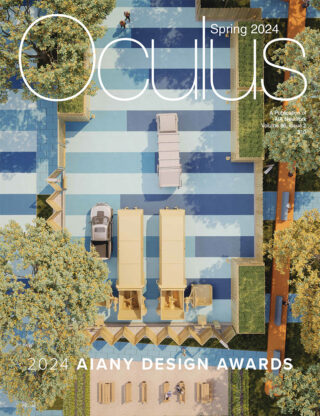
BROWSER UPGRADE RECOMMENDED
- Internet Explorer
- Google Chrome
- Share full article
Advertisement
Supported by
What to See in N.Y.C. Galleries in June
By Will Heinrich , Holland Cotter , Yinka Elujoba and Jillian Steinhauer
This week in Newly Reviewed, Jillian Steinhauer covers Farkhondeh Shahroudi ’s nuanced history, a Latin American textile show and an exhibition featuring 46 contemporary artists who work in a wide range of mediums and materials.
Gramercy Park
Farkhondeh Shahroudi
Through July 3. Goethe-Institut New York, 30 Irving Place, Manhattan; 212-439-8700, goethe.de/ins/us/en/ .

The artist Farkhondeh Shahroudi was born in Tehran 17 years before the 1979 Iranian Revolution that brought an oppressive Islamist government to power. She studied painting and stayed in her home country until 1990, when she sought political asylum in Germany, where she still lives.
This history informs Shahroudi’s art, on view for the first time in the United States in the exhibition “ Of Weeping Trees ” — but in a nuanced way. It’s useful to know the symbolism of the green and red she uses (colors on the Iranian flag), but that doesn’t offer a simple key to Shahroudi’s world. She comes at politics through poetry, with sculptures, paintings and videos that are far more evocative than didactic. Some of the work has a dark edge — for instance, “Net” (2021–24), which is woven from artificial hair and looks like a cage, especially with chains weighing it down. But other pieces are more playful, their meaning more slippery. “Ffoossiillllllll” (2024), with its droopy appendages dangling on a pole, could be a creature or a tree, alive or dead.
Shahroudi is interested in repetition, as evidenced by her use of language: Words in German, Farsi and English appear throughout, from the automatic writing on the institute’s street-facing window to conceptual videos featuring recurring actions and images. Sometimes the text is absurdist, gesturing toward meaningless; other times it’s a powerful incantation. The show’s installation is a bit crowded, but that may be fitting. It feels like Shahroudi is continually staging and iterating a set of questions.
‘Threads to the South’
Through July 27. Institute for Studies on Latin American Art (ISLAA), 142 Franklin Street, Manhattan; islaa.org .
For decades, textile art was trivialized as “craft” and “women’s work” by mainstream U.S. institutions. That longstanding bias has started to erode , but countless fiber art practices remain underexplored. “ Threads to the South ,” a thrilling exhibition curated by Anna Burckhardt Pérez, spotlights some of them.
The show focuses on Latin America, a region with long and varied thread-based traditions. Many of the 22 artists from 10 countries draw on these heritages, including Julieth Morales , a member of Colombia’s Misak Indigenous community. Her piece “Untitled” (2022) is woven in the style of a striped Misak skirt, but hangs instead as an unfinished banner from the ceiling — a statement of pride and possibility.
The exhibition is intergenerational, but the knockouts are mostly older. Among them are Olga de Amaral ’s “Tapete — Número 330” (1979), a checkered wool and woven leather rug; Nora Correas ’s “En Carne Viva” (1981), an animalistic bundle of dark red and fuchsia wool forms; Jorge Eielson ’s “Amazonia XXVII” (1979), a cross between ancient Andean and Western postmodernist traditions; and Feliciano Centurión ’s embroideries on synthetic blankets from the 1990s. These disparate works are alternately visceral and cerebral, intimate and chic. They expand the canon and common understanding of fiber art and who makes it.
Themes emerge throughout the show, but ultimately “Threads to the South” is about identity. Not in a reductive way, as has often been the case in the U.S. Rather, the exhibition argues convincingly that because fabric is at the root of so much Latin American art and life, it deserves, even demands, to move from the margins to the center.
‘Painting Deconstructed’
Through Aug. 18. Ortega y Gasset Projects, 363 Third Avenue, Brooklyn; oygprojects.com .
What makes a painting a painting? Is it the application of color to canvas or board? The fact that it hangs on a wall? What about different types of art that are informed by painting’s histories and conventions? Where should we draw the line (pun intended)?
These are some of the questions raised by “ Painting Deconstructed ,” an exhibition featuring 46 contemporary artists who work in a wide range of mediums and materials. That’s what makes the show equally smart and fun: You won’t find a straightforward painting anywhere. Instead you’ll find pieces made of ceramics, fabric, photography, and even balloons that evoke paintings, and paint applied to all manner of surfaces, including T-shirts and palm husk.
For me, looking back and forth between the artworks and checklist became a kind of treasure hunt. I wanted to find out what elements made up Scott Vander Veen ’s wonderfully tactile “Graft #2 (Thigmomorphogenesis)” (2023). Learning that Jodi Hays used a found plein-air painting kit in her weathered “Self Portrait at 61” (2024) made me chuckle.
Kevin Umaña ’s “Split Apple Core” (2023) is a technical marvel: a complex and sumptuous ceramic work that could be an abstract painting. I delighted in the conceptual cleverness of Erika Ranee ’s multimedia and nonrepresentational “Selfie” (2024), which includes black-eyed peas, a plant and the artist’s hair dipped in acrylic.
There’s remarkable skill on view throughout “Painting Deconstructed,” but it doesn’t feel like it’s being deployed solely for technical ends. These artists experiment in order to open up the category of painting. They use what it has been to imagine what it might yet be.
More to See
Pat oleszko.
Through July 20. David Peter Francis, 35 East Broadway, No. 3F, Manhattan; 646-669-7064; davidpeterfrancis.com .
Pat Oleszko has performed at MoMA, the Whitney, P.S. 1 and P.S. 122, but “Pat’s Imperfect Present Tense,” at David Peter Francis in Chinatown, is her first solo show in nearly 25 years. As you’d expect, it’s overflowing with five decades’ worth of hats, costumes, signs and videos that delight in subversion and take subversively uncomplicated pleasure in delight.
In “Footsi,” two fingers in tiny shoes and socks tiptoe across a woman’s naked belly. In “Where Fools Russian,” Oleszko takes aim at Cold War paranoia, “Dr. Strangelove” style, by putting on a dozen layers of clothing and submerging herself in the Atlantic. There’s an enormous inflatable pelvis through which she can give birth to herself (“Womb With a View”), a “coat of arms” made for the 50th anniversary of the Surrealist Manifesto and a similar but more revealing “handmaiden” costume designed for a striptease in Japan. The punning is relentless.
There’s a clear feminist bite to much of this, and a frequent political edge that ranges from pointed to broad. There’s even a light tweaking of art-world categories, since you’re never quite sure if these are sculptures masquerading as costumes or vice versa. But the real subversion here is simply Oleszko’s full-scale refusal to take herself, or anything else, seriously: It’s hard to participate in this kind of humor, even as a viewer, without losing hold of whatever serious, oppressive trip you may have walked in with.
Charles Ray
Through June 29. Matthew Marks Gallery, 522 West 22nd Street, Manhattan; 212-243-0200; matthewmarks.com .
Charles Ray is very good at white. He’s also good at silver, gray, variations of scale, excess and precision. But the three sculptures in this unfathomably elegant show — a 24-inch crashed car made of cut Japanese paper, a blurry nine-foot-tall, cast-paper-pulp woman, and two naked marble men lying on a slab — are all bright, bleachy white.
Whiteness of this kind offers all sorts of classical and scientific connotations for Ray to leverage and distort. And the pieces certainly have the undercurrent of horror that Herman Melville diagnosed in the “Whiteness of the Whale” chapter of “Moby-Dick, ” in part because in a white-cube gallery they mess with your sense of where the walls are. But mainly what struck me about them was how many subtleties of light and texture they let me see, particularly on “Two dead guys.”
The surfaces of these two supine, naked, machined, slightly larger-than-life men have been sanded but not polished. Fine gray impurities floating just under the surface become freckles or veins, and if you lean in close, you can sometimes see fingerprint-like grooves. The men’s faintly protruding nipples, catching the light differently than their smooth chests, were only just discernible. And as I crouched down to examine the sole of one foot, I discovered a minuscule bright red dot. Before I could notify the attendant, the dot began to move: It was a spider that must have fallen from someone’s jacket or crawled up from the floor. I wouldn’t have noticed it anywhere else.
Lauren dela Roche
Through June 29. Eric Firestone Gallery, 40 Great Jones Street, Manhattan; 646-998-3727; ericfirestonegallery.com .
Naked women lounge across cotton feed sacks mounted on stretcher bars in “No Man’s Land,” the self-taught painter Lauren dela Roche’s debut show with the Eric Firestone Gallery. Their heads all have the same dark hair and fine features, as if copied from the cover of a single Victorian calendar, and are two or three sizes too small for their statuesque bodies. An unbroken vista of fountains, butterflies, flowers, shallow tunnels and swans with chili-pepper beaks extends behind them.
Apart from their stockings and socks and the circles of red on their cheeks, the women are left the unpainted color of the sacks, which ranges from nearly white to cream of wheat, sometimes in a single figure. Occasionally one of the women wears an old brand name or farmer’s name like a tattoo: “Cincinnati Seamless” on a crotch, “Al Dumdey” on a leg. The feed sacks are also mended here and there, and the backgrounds balance the beige expanses of flesh with plenty of black and dark green.
It’s hard not to think of the great outsider artist Henry Darger (1892-1973), despite all the differences in the emotional tone of his and dela Roche’s work. She uses the same drifting, dreamy, not quite flat organization of space and a similar kind of 19th-century drawing that has more in common with cartography than figure study. Most of all, though, the chimeric reduplicating woman she keeps returning to suggests an unresolved fixation, like Darger’s, on the equally unresolvable incongruity at the heart of human life — that union of the carnal and the ethereal that we call sex.
Last Chance
‘xenobia bailey: paradise under reconstruction in the aesthetic of funk: the second coming’.
Through June 15. Venus Over Manhattan, 39 Great Jones Street, Manhattan; 212-980-0700, venusovermanhattan.com .
The art of Xenobia Bailey has a prominent public presence in New York City. Her gleaming glass mosaic “Funktional Vibrations,” a 2015 Metropolitan Transportation Authority commission, arches, like a sky of shooting stars, over the entrance to the Hudson Yards subway station on 34th Street. Yet her current exhibition at the gallery Venus Over Manhattan is her first solo show here in some 20 years.
And like Vega, with his murals and beadwork, Bailey — born in Seattle in 1955 — has chosen to work primarily in a crafts-associated medium, namely fiber crochet. She came to it via a roundabout route, through the study of painting (Jacob Lawrence was one of her teachers), ethnomusicology, millinery and costume design. She learn hand crochet from the master needleworker Bernadette Sonona, and ended up putting this low-technology technique to extravagant use.
Bailey’s initial crochet pieces were body-scaled, based on African headpieces and hairstyles. (Some of her early designs can be spotted in Spike Lee’s 1989 movie, “Do the Right Thing.” An “Afrocentricity” hat, of the kind worn by Samuel L. Jackson in the film, is in the show.) The direction she was headed was Afrofuturistic, and her focus soon lifted off from wearables to producing the equivalent of fabric murals, which seemed to exist in spiritual realms proposed by performers like George Clinton and Sun Ra.
Here we visit that realm. Big, jazzily patterned crochet circles, crosses between mandalas and domestic throw rugs, predominate. Some hang alone on the wall, or, in “Sun Birthing” (1999), are joined together in a galactic cluster. Here and there, perfect circularity is varied. In “C-Trane Express Track” (circa 2000), a circle is stretched into propulsive ellipsis. In “Shooting Star” (2008), a kaleidoscopic grouping is given an arching comet tail. And in the early “She Bop-She Boom” (1996/1999), a grouping of connected circles serves as a bed of repose for a small, solid indigo female figure.
The dates of this last work indicate that it took three years to reach its finished state, and the show’s centerpiece, “Sistah Paradise’s Great Walls of Fire Revival Tent” took fully 16 years, from 1993 to 2009. You can see why. It’s a complex thing. Positioned in the center of the gallery, suspended over a flaming sun-shaped carpet, and ornamented with cowrie shells, its form is that of African royalty and priestly crown; its apparent function is as a meditative room-for-one-person shelter in which enchantments are cast and futures foretold. The words “Mystic Seer” are stitched over the entrance to this hand-sewn tour de force. Add “Artistic” to “Mystic” and you get Bailey’s identity exactly right.
There are two other mid-to-late-career shows you won’t want to miss. One is “Norberto Roldan: How Not to Win a Revolution,” the first New York solo exhibition of a veteran artist born in 1953 in the Philippines, where he is a major cultural presence and, with his material-rich textile art-based work incorporating religious and political imagery, an intensely interesting one. ( Silverlens , 505 West 24th Street, Chelsea, through June 15.)
The other, at Venus Over Manhattan’s second space, a few doors away from the Bailey show, is the first local solo exhibition since 1991 of the celebrated painter Chéri Samba , who lives and works in the Democratic Republic of Congo. There, at 67, he is still going strong, like the international market for contemporary African figure painting that his career helped start. ( Venus Over Manhattan , 55 Great Jones Street, through June 15). HOLLAND COTTER
Richard Ayodeji Ikhide
Through June 15. Candice Madey, 1 Freeman Alley, Manhattan; 917-415-8655; candicemadey.com.
Among the Edo people of Nigeria’s Benin Kingdom, the art of forging mythologies is highly regarded. These myths permeate everything: language, festivals, stories told to children, as well as the famous Benin sculptures that are now scattered across museums around the world. In “Ties That Bind With Time,” Richard Ayodeji Ikhide is fashioning his own mythology, complete with Emiomo, the recurring protagonist who functions as an emissary or messenger in his paintings.
The large-scale watercolor, gouache and collage paintings here depict Emiomo’s journey through a kind of private universe. The figures are fluid and almost wobbly, as if they were pouring out of the canvas. Spots, dots and circles form repeated patterns, and all the figures are naked except for Emiomo, who occasionally has a red ribbon around his neck. The many activities in the frames almost make the fantastical creatures (like a goat with two eyes on each side of its face) believable.
Although most people consider the Benin sculptures ancient, they were largely intended to be contemporary, incorporating the events of the day such as the arrival of Portuguese missionaries and traders. Myths were therefore not just history-making but an enactment of the present. Ikhide’s era is obviously different from those of the Benin bronzes, yet he follows this tradition of recording the zeitgeist by including references to Japanese manga, virtual reality and video games in his own mythology. There are also more characters making a collective present here, unlike in “Emiomo,” the 2021 show at the same gallery where Ikhide had first introduced the character, mostly in solitary settings. Ikhide, born in Nigeria in 1991 and trained in textile design at the University of the Arts London, is navigating a community in his personal life, having just become a father. This is how in “Ties That Bind With Time,” the artist’s universe is fuller and Emiomo is no longer alone. YINKA ELUJOBA
Lucas Arruda
Through June 15. David Zwirner, 537 West 20th Street, Manhattan; (212) 517-8677, davidzwirner.com .
The Brazilian artist Lucas Arruda’s recent paintings at David Zwirner recall an aspect of the collective wonder we experienced with the solar eclipse last month, which, for a moment, seemed to stop time so people could gather merely to look up and perceive how our humble planet fits into the greater celestial order.
Arruda evokes a similarly profound feeling of lightness and dark. This big and impressive show features 42 works from the last five years, all paintings ranging from monochrome abstractions to landscapes of jungles, deserts, clouds and sky. The most elemental works are included in a site-specific installation of three pairs of stacked rectangles: in each pair, one is painted directly on the wall, the other created via the projection of light. (Stare closely to see if you can tell which is which, before approaching and letting your shadow reveal the answer.)
Arruda manages transcendence at a modest scale: Most individual works are as small as a sheet of letter-size paper. His painterly appeal triangulates characteristics of Mark Rothko, the late works by J.M.W. Turner and most notably Vija Celmins. His scratchy treatment of starry skies are the rare misstep, with this expansive subject (mastered by Celmins) depicted by Arruda as claustrophobic and deadened.
This weak spot only makes more apparent the small miracle Arruda performs in rendering the complex sprawl of jungle on his diminutive canvases. As in “Untitled (from the Deserto-Modelo series)” (2019/2020), where the mist of the horizon invades the scene, overtaking the tangles of foliage in a sublime dance of textures. A narrow band of horizontal strokes delineates the bottom of the composition before the trees begin. This helps organize the picture while suggesting clear cutting and nodding to man-made environmental destruction. Unmissable. JOHN VINCLER
Lubaina Himid
Through June 15. Greene Naftali, 508 West 26th Street, Ground Floor, Manhattan; (212) 463-7770, greenenaftaligallery.com .
Walking through Chinatown before heading to Chelsea, I passed a man standing on the sidewalk beside a sheet of cardboard on which three large fish were resting, so fresh their gills seemed still gasping for air. A few paces away, another man used a pair of tongs to keep live blue crabs from pinching one another in the plastic tray he presented in his other outstretched hand to passers-by.
“Street Sellers” like these feature in Lubaina Himid’s oversized portraits and provide the name for the show, which renders the space of the gallery as a surreal street scene. Before each of the 10 portraits that tower at eight feet tall, a cardboard sign presents a phonetic rendering of words that the merchants might shout out to sell their wares. The effect is whimsical without being cloying, and most importantly the paintings are all lively.
The 69-year-old artist is having a well-deserved American moment. Born in Zanzibar, off the east coast of Africa and based in Preston, England, Himid has a solo show concurrently at the Contemporary Austin in Texas through July, having received the 2024 Suzanne Deal Booth / FLAG Art Foundation Prize.
The best works here incorporate collections of depicted small objects, making whole universes out of the scenes, with numerous details to focus on. Take for example, the pale prosthetic hand stretching out from the “Talisman Seller” who is holding a ribbon while presenting a box containing various shells. The exhibition also includes two works of ceramics — a plate and serving dish — embellished with paintings of a molar and a tongue (both 2024), as well as two portraits painted in profile within two otherwise empty drawers affixed to the wall. A scavenger hunt of looking. JOHN VINCLER
‘Byzantine Bembé: New York by Manny Vega’
Through Dec. 8. Museum of the City of New York, 1220 Fifth Avenue, Manhattan; 212-534-1672, mcny.or g.
In celebration of its centennial year, the Museum of the City of New York invited Manny Vega to be its first artist in residence. Fabulous choice. Vega is a native New Yorker and a treasure, with a nearly four-decade track record of visual scintillation behind him. The essence of that career is distilled in a 24-karat nugget of a survey, “Byzantine Bembé: New York by Manny Vega,” assembled by Monxo López, the museum’s curator of community histories.
Puerto Rican by descent, Vega was born in 1956 in the Bronx, raised there and in Manhattan, and an immersion in art came early. One of his first jobs after graduating from the High School of Art and Design was as a guard at the Cloisters, the Met’s branch in Upper Manhattan devoted to European medieval art. In 1979 he joined El Taller Boricua (Puerto Rican Workshop), the street-active artist collective and graphics workshop in the East Harlem neighborhood known as El Barrio.
In the early 1980s, he began traveling to Brazil, where he was initiated into Candomblé, an Afro-Atlantic religion that fuses West African Yoruba and Roman Catholic beliefs and has a vivid tradition of ceremonial art, including beaded banners and ritual utensils, both of which Vega has produced. Given these entwined influences, conventional distinctions between “high art,” “popular art” and “spiritual art” have never made sense to him, which explains the title of his show, “Byzantine” suggesting intricate formal polish; and “Bembé” evoking drum-driven religious worship that is also a party.
The mix is there in four small paintings he made in 1997 as studies for a set of mosaics commissioned by the Metropolitan Transportation Authority for the subway station at East 110th Street and Lexington Avenue. Brightly colored and packed with figures, the images depict El Barrio street life — neighbors jostling, vendors selling, bands playing — and give it a charge of devotional fervor, aural exultation. (A tour of other Vega commissions in East Harlem, all within walking distance of the museum, is well worth making, a highlight being his tender homage to the poet Julia de Burgos (1914-1953) on a building at East 106th Street and Lexington Avenue.)
Sound and movement are major components in Vega’s visual universe. Icon-like images of Ochun, the Yoruba goddess of dance, and St. Cecilia, the Roman Catholic patron saint of music, appear in the show as tutelary spirits. And there are others. One is the Barrio-born jazz musician Tito Puente, whose album covers Vega has reproduced as glass mosaics. And in a large ink drawing, as crisp as a woodcut, we find the assembled performers of Los Pleneros de la 21, a local dance and music troupe promoting traditional bomba and plena.
Maybe inevitably in the case of an artist coming from an immigrant background, and from a culture long, and still, devalued if not demonized in mainstream America, politics runs, like a bass note, throughout Vega’s art. In his case, though, it’s far less a politics of overt protest than of positive assertion.
In the work of this profoundly devotional artist, the presiding deity is also an immigrant. It’s Changó, the Afro-Atlantic spirit of justice and balance, and also of dancing and drumming. A watercolor painting of him closes the show, and it’s a classic Vega creation: formally precise, imaginatively stimulating, instantly accessible. And it has found just the right home. It’s on loan to the show from Supreme Court Justice Sonia Sotomayor who, a wall text tells us, displays it in her chambers in Washington. HOLLAND COTTER
East Village
Through June 22. Karma, 22, 172, and 188 East Second Street, Manhattan; 212-390-8290, karmakarma.org.
In the late 1960s and early ’70s, Alan Saret’s delicately chaotic sculptures and drawings — sensuous tangles of wire and whorls of colored pencil — were part of the cerebral work promoted at Bykert , the short-lived but influential gallery that provided wide latitude to post-Minimalist artists like Brice Marden and Lynda Benglis. Yet even that laxity proved too constraining for Saret, who chafed at being hemmed in, often to the point of self-sabotage. (He supposedly pulled out of a Whitney showcase in 1969 because he didn’t like the title.)
Saret’s allergy to gallery systems led him to search out alternatives. After contributing to the 1971 India Triennial, he hung around for nearly three years, immersing himself in spiritual self-inquiry. He took to exhibiting out of his studio, and later constructed Ghosthouse, an outdoor mesh shelter in upstate New York that he inhabited for several months.
So it’s a small miracle that a survey of Saret’s works from 1975 to the present currently stretches across Karma’s three galleries. Oracular, kaleidoscopic works on paper combine Saret’s mathematical studies with what appears like religious sacred geometry redolent of the I Ching and the Kabbalah’s Sefirot — intricate compositions thick with color, language, and visual information that spirals and stellates, like schematics for achieving transcendence.
The most disarmingly sublime though are Saret’s “dharanis,” calligraphic gossamer ink drawings of lyrical, gnomic koans — what were once called mantras but are referred to now, in wellness culture, as daily affirmations. For Saret this mode of thinking was not faddish but a deeply felt way of organizing his being. They’re less text art than devotional objects, a reminder that the real art is being alive. MAX LAKIN
Midtown and Chelsea
Jamie Nares
Through June 22. Kasmin, 297 10th Avenue, Manhattan; 212-563 4474, kasmingallery.com .
Through June 2. MoMA, 11 West 53rd Street, Manhattan; 212-708-9400, moma.org .
For nearly 50 years the artist Jamie Nares has sped up time and slowed it down, lingering on it or folding it back in on itself. This two-venue retrospective — at MoMA, 40 of Nares’s No Wave and post-Minimalist films from the mid-1970s; and at Kasmin, 100 works on paper made after she traded her Super 8 for a paintbrush — suggest that her concerns have remained constant even as their expression changes.
The most thrilling remains “Pendulum” (1976). Nares suspends a heavy metal sphere on a wire and shoots it from multiple angles — at street level and above, and with the camera duct-taped to it — as it slices through a deserted TriBeCa street for 17 minutes. The sphere flirts with walls and threatens to obliterate fire escapes, a wrecking ball presaging the neighborhood’s impending redevelopment. It is the exact kind of a film a painter would make, the pendulum tracing out its elegant line in the air, a metronome ticking out a visible pulse.
Nares’s 2011 film, “Street” is another one: a continuous, linear gesture, three minutes of footage trawling the streets of the city slowed into a 61-minute tableau of kinetic humanism. It recalls the artist’s untitled 1988 oil on wax paper: an undulating gesture made without breaking contact, the brushstroke as tracking shot. Many of the paper works behave this way, Nares’s thick marks gliding along the surface, inducing, as in her films, a trance-like state. In both the films and drawings, there’s an attempt to locate a still point amid perpetual motion, and the recognition that that impulse is both impossible as it is inevitable. MAX LAKIN
The Word-Shimmering Sea: Diego Velázquez / Enrique Martínez Celaya
Through July 14. The Hispanic Society Museum & Library, 613 West 155th Street, Manhattan; 212-926-2234, hispanicsociety.org .
There are places you can’t easily return to, like childhood or, for many migrants and refugees, the country where they were born. This was true for Enrique Martínez Celaya , who was born in Cuba and relocated with his family to Madrid when he was a young boy. Martínez Celaya, now almost 60 , returned to Cuba only in 2019, but he has found a way of retrieving both childhood and homeland in this impressive exhibition at the Hispanic Society .
Large canvases by Martínez Celaya include blown-up snippets from his childhood notebook, surrounded by interpretations of waves and seascapes. In a stroke of kismet, the notebook from which these early drawings were copied was given to him by his mother and featured a reproduction of a painting on its cover: Diego Velázquez’s “Portrait of a Little Girl” circa 1638-42 , which is in the collection of the Hispanic Society. That painting is displayed at one end of the room.
Objects and their historical hierarchies are irreverently jumbled in the show: Velázquez, the great Spanish painter, sits alongside Martínez Celaya’s childish doodles. In another series of paintings by Martínez Celaya, the “Little Girl” holds objects that he coveted as a boy. The exhibition also includes work by other artists, like the 1971 notebook of Emilio Sánchez , an artist born in Cuba in 1921 who never went back to his homeland after 1960. In the end, the subject of the exhibition is really an immaterial poetic thread in which memory is fleeting but art, in its various forms, connects people, places and history. MARTHA SCHWENDENER
Life Cycles: The Materials of Contemporary Design
Through July 7. Museum of Modern Art, 11 West 53rd Street, Manhattan; 212-708-9400, moma.org .
My favorite clock of all time is a video: A camera looks down onto two skinny mounds of garbage, maybe 20 and 15 feet long, meeting at one end like the hour and minute hands on a watchface; for the 12 hours of the video, we see two men with brooms sweeping these “hands” into ever new positions, at a pace that keeps time.
The piece is by the Dutch designer Maarten Baas, and it’s among the 80 works in “Life Cycles: The Materials of Contemporary Design,” a group show now in MoMA’s street-level gallery, which has free admission.
The “materials” of today’s most compelling design turn out to be ideas, even ethics, not the chrome or bent wood that MoMA’s title would once have invoked. This show’s ethical ideas center on the environment and how we might manage not to abuse it.
Baas’s “Sweeper’s Clock,” is perfectly functional — could I view it on an Apple Watch? — but it also works as a meditation on the Sisyphean, 24/7 task of dealing with the trash we generate.
All-black dishes by Kosuke Araki look very like the minimalist “black basalt” china designed by Josiah Wedgwood way back in 1768 (it’s some of the oldest “modernism” claimed by MoMA) except that Araki’s versions are made with carbonized food waste.
Food not at all wasted, but consumed — by cattle — goes into making Adhi Nugraha’s lamps and speakers, as explained by the title of the series they’re from: “Cow Dung.” BLAKE GOPNIK
Christopher Wool
Through July 31. 101 Greenwich Street (entrance on Rector Street), Manhattan; seestoprun.com .
The dilapidated 19th-floor office space hosting Christopher Wool’s recent sculptures and paintings could not be more simpatico with them. In its state of abandoned tear-down, the venue offers melodious visual rhymes: electrical cords dangling from the ceiling ape Wool’s snarls of found-wire sculpture; crumbling plaster mirrors the attitudinal blotches of his oils and inks. Scrawls of crude graffiti or quickly penciled notes left by workmen emulate the tendril-like lines dragged through Wool’s globular masses of spray paint. The space is a horseshoe-shaped echo of Wool’s work — raw, agitated — and the restless elegance he wrenches from a feeling of decay.
Wool said he started to think about how environment affects the experience of looking at art when he began splitting his time between New York and Marfa, in West Texas. Photographic series he made there, like “Westtexaspsychosculpture,” depict forlorn whorls of fencing-wire debris that look like uncanny mimics of Wool’s own writhing scribbles, and which inspired scaled-up versions cast in bronze. (The Marfa landscape is fertile ground for New York artists. Rauschenberg made his scrap metal assemblages after witnessing the oil-ruined landscape of 1980s Texas, what he called “souvenirs without nostalgia,” a designation that’s appropriate here, too.)
Place has always seeped into Wool’s work. His photographs of the grime and trash-strewn streets of the Lower East Side in the 1990s — compiled as “East Broadway Breakdown” — aren’t included here, but “Incident on 9th Street” (1997), of his own burned-out studio, are. The chaos of those scenes repeat here, the wraparound floor plan and endless windows letting the city permeate the work, just as it did in their making. MAX LAKIN
Robert Irwin
Through Aug 31. Judd Foundation, 101 Spring Street, Manhattan; 212-219-2747, juddfoundation.org . Public hours: Friday–Saturday, 1:00–5 p.m., or by appointment.
In 1971 Robert Irwin installed a 12-foot acrylic column in the ground floor of Donald Judd’s SoHo studio, a prism positioned to pick up light from the building’s large southern and western windows. Since the early ’60s, Irwin had been pushing the definition of art beyond objecthood, gradually reducing his work of distractions until he stopped producing salable art works. By 1970, he had abandoned his studio in favor of what he called a conditional practice: making subtle, barely perceptible interventions in architecture to tease out the marvels of visual potential. He viewed his installations merely as tools to induce the real art, which was perception — “to make people conscious of their consciousness.”
A later iteration of that work, “Sculpture/Configuration 2T/3L,” first exhibited at Pace in 2018, is on view in roughly the same spot (the hole bored through the floor 53 years ago remains, never filled). More advanced, formed by two columns of stuttering panels of teal and smoky brown acrylic, it’s beautiful, but its beauty is beside the point. It melts into the background, both there and not there. Sunlight catches a corner or flutters over a faceted edge as you move around it, splicing and refracting SoHo’s thrum, making it new.
The installation’s long run means the quality of natural light will change and so too will the effect. It’s a slow, affecting distillation of Irwin’s philosophy, which remains generously contra the art world’s relentless demand for novelty. Irwin, who died last year , refined an expansive vision, making us aware of the transitory, letting us see what was always there, for as long as we can. MAX LAKIN
Huong Dodinh
Through Aug. 16. Pace Gallery, 540 West 25th Street, Manhattan; 212-421-3292; pacegallery.com .
Buoyed by a great sense of calm, and even silence, the paintings in Huong Dodinh’s “Transcendence” represent an artist’s triumph after decades of pursuing concision by adopting a minimalist vocabulary. It is this Paris-based artist’s first-ever solo exhibition in the United States in her close to 60 years of painting.
Beginning with a rare 1966 figurative painting, whose colors seem to recall Pieter Bruegel the Elder’s “Hunters in the Snow,” the show progresses to the ’90s and to the last couple of years. Figuration falls away as the decades pass, the artist’s hand becomes less pronounced, and by the 2000s Dodinh’s central concerns emerge: light, density, transparency and how these interact with lines, forms and space. These come together gracefully in works like “Sans Titre,” from 1990, in which three sensual curves depict what could be mountains in a desert, or layers of women’s breasts.
Dodinh’s soft palette — a quiet but delightsome range of carton browns, light blues, and off-whites — originated from her first experience with snow in Paris, where her family fled from Vietnam in 1953 during the First Indochina War. She was a child in boarding school when she first witnessed snow and marveled at how it revealed subtle colors underneath when it started to melt. Subtlety, a hallmark of Dodinh’s work, is something she goes to great lengths to attain: She has always worked alone, without assistants, makes her own pigments, ensuring that every inch of her canvas is filled with an energy that is wholly hers. It has been a long solitary journey and after all these years, even while Dodinh masters the art of austerity, her work feels adorned. YINKA ELUJOBA
See the May gallery shows here .
Will Heinrich writes about new developments in contemporary art, and has previously been a critic for The New Yorker and The New York Observer. More about Will Heinrich
Holland Cotter is the co-chief art critic and a senior writer for the Culture section of The Times, where he has been on staff since 1998. More about Holland Cotter
Jillian Steinhauer is a critic and reporter who covers the politics of art and comics. She won a 2019 Andy Warhol Foundation Arts Writers grant and was previously a senior editor at Hyperallergic. More about Jillian Steinhauer
Art and Museums in New York City
A guide to the shows, exhibitions and artists shaping the city’s cultural landscape..
Pieces add up to an archive of a life lived deeply in Lyle Ashton Harris’s compelling survey at the Queens Museum.
The photographer Vivian Maier was a supremely gifted chameleon. But even in her striking new exhibition at Fotografiska , she remains in the shadows.
Ray Johnson, the artist you meet in a small, revelatory show, is quite different from the one known for mail art and his later gritty samplings of popular culture.
At the Museum of Modern Art, the documentary photographer LaToya Ruby Frazier honors those who turn their energies to a social good .
Looking for more art in the city? Here are the gallery shows not to miss in June .

IMAGES
VIDEO
COMMENTS
AIA New York and the Center for Architecture offer a wide variety of architecture tours for all audiences, across New York City and beyond. See tour options in each category below. AIA New York
Hudson Yards, HighLine Tour with Optional Edge Entry. 223. Hudson Yards is one of New York's most cutting-edge private real estate developments. On this one-of-a-kind walking tour, discover the secrets of this new Manhattan complex and learn about the resources and engineering ingenuity that went into its creation.
Add to myNY. The architecture boat tour takes you around Manhattan in 2.5 hours. On a 30 meter long wooden ship in the style of the 1920s you can relax and learn a lot of interesting facts about the many small and large buildings of the city. The tour is super-relaxing and the price includes a drink (vino, soft drinks) and small snacks.
This is an NYC architecture tour that focuses on climate change in NYC and will also explore the importance of the environmental justice movement in New York City. On this NYC climate change boat tour, hear compelling and comprehensive steps that interdisciplinary teams of urban planners, architects, landscape architects, developers, and ...
6. Rockefeller Center Architecture & Art Walking Tour. Rockefeller Center is one of the most visited places in New York City, with millions of visitors coming every winter to gawk at the enormous Christmas tree erected in the central plaza of the complex. Although Rockefeller Center is synonymous with Christmas in NYC, many people don't know ...
Adults: $116 each | Students: $86 each. This 2-hour-and-45-minute cruise, AIANY's signature tour experience, circumnavigates the island of Manhattan via the Hudson, East, and Harlem rivers. Enjoy expert narration by an AIANY guide as you explore the architecture, infrastructure, and urban planning of New York City.
Harlem's Mount Morris Park Historic District covers 16 blocks of Gilded Age buildings, from splendid homes to gorgeous churches. Get acquainted with the area on a three-hour walking tour of the ...
Building Tours. Guided tours of significant buildings in New York City and the Tri-State area are organized by AIA New York Program Committees. Led by architects, these intimate tours offer greater detail about a given site or building including its initial design and construction. Building tours are an opportunity to see inside some of the ...
General Public: $30AIA Member: $25. Meet at the Unisphere, Flushing Meadows Corona Park, Queens, NY. Join architect William Gati on a journey through time and space in the heart of Queens, as he guides you through the historic Flushing Meadows Corona Park, site of the 1939 and 1964 World's Fairs.
AIA New York and the Center for Architecture offer architecture tours for all audiences, across New York City and beyond. See options for boat cruises as well as walking and building tours. Donate to support K-12 Programs at the Center for Architecture.
The phenomenal transformation of Midtown Manhattan into a world-renowned cityscape of iconic structures in the first-half of the 20th century still leaves anyone in rapt astonishment. Our tour highlights around 20 architectural landmarks that rose within a span of a few remarkable cultural decades, energizing and electrifying a once-undisturbed ...
Tour Description. In this three-hour architecture tour of New York we'll join a local architect or historian for a stroll down 42nd Street and through 150 years of Manhattan's history. We'll gaze up at the Chrysler Building, step inside the Daily News Building, and explore Grand Central Station. At the end we'll come away with a better ...
a plus nyc --- art and architecture tours by design professionals aplusnyc. offers professionally guided tours to New York City's architectural highlights, urban re-development areas, flagship stores, museums, galleries and art installations.. All tours are led by trained architects and artists, who are actively involved in the transformation and documentation of the city.
Cost: $40 per person for a 2.5-hour tour. Tour available: Monday, Wednesday, Friday. [If no public dates are available during your time-frame, please contact us to arrange a private tour on any date!] BOOK NOW. Discover the most amazing architectural landmarks of Midtown in one small-group tour, from art deco and beyond!
Hop aboard a climate-controlled 1920s-style yacht, enjoy a refreshing beverage, and listen to your guide—a trained architect—tell stories about the city's history, famous skyscrapers, and riverfront construction. Read more. from. $116.00. per adult.
Art Deco and Architecture Tour in New York City with Expert Guide. 0. 2 hours 15 minutes. Free Cancellation. From. $139.00. Likely to Sell Out. New York City Bright Lights Skyline Cruise on Yacht. 93. 1 hour 15 minutes. Free Cancellation. From. $72.00. Fall Foliage Cruise on Yacht Full Moon from Chelsea Piers. 1. 2 hours 30 minutes.
AIA New York and the Center for Architecture offer a wide variety of architecture tours for all audiences, across New York City and beyond. See tour options in each category below. Boat Tours. Walking Tours. Building Tours. ... AIA New York | Center for Architecture 2024 ...
Ellis Island. Built in 1900 by architects Edward Lippincott Tilton and William A. Boring, Ellis Island was once the gateway for over 12 million immigrants hoping to find a new home in the United ...
The tour will examine architecture from 1870 to the present on and near Madison in the East 60s and 70s, an area entirely within the Upper East Side Historic District, and consider how landmark designation has preserved the avenue's distinctive character. ... Meet at the Center for Architecture, 536 LaGuardia Pl New York, NY 10012. The SoHo ...
The Manhattan skyline includes some impressive feats of New York architecture. Tour the harbor and get great views of breathtaking sights with an architectural boat tour! NYC's best views will unfold before you when you cruise with us. The Manhattan skyline includes some impressive feats of New York architecture. ...
See all New York City tours. Best Places to Visit in New York City. 9-11 Memorial, Ground Zero One World Observatory Statue of Liberty Metropolitan Museum of Art Museum of Modern Art Guggenheim Museum Top of the Rock Empire State Building Ellis Island Central Park. Tours and Things to do in New York City. Boat Tours Food Tours Helicopter Tours ...
Discover exclusive content and listen to commentary from the architects behind a selection of past Buildings of the Day on our mobile guide on Bloomberg Connects, the free arts and culture app. Archtober is New York City's Architecture and Design Month, an annual festival of architecture activities, programs and exhibitions.
Today AD joins architect Nick Potts in New York City for a walking tour of The Highline. Once dubbed 'Death Avenue' due to hundreds of railroad deaths, the area is now a thriving public park ...
+ Add to Calendar 2024-06-30 11:00:00 2024-06-30 13:00:00 America/New_York RESCHEDULED - Walking Tour: The Architecture of Madison Square Park This tour which was originally scheduled for Sunday, June 30 has been rescheduled to Saturday, June 29. Those interested my register here As the city moved rapidly northward in the 18th century, a series of small parks were established, anchoring ...
Sail New York Harbor on a 19th-century sailboat, dive into 100 years of NYC travel posters, track down remnants of New Amsterdam, and more!
Architecture comes first in this tour de force creation ... Architectural Digest. Tour a Light, Bright, and Modern Home in Upstate New York. David Sokol. Posted: November 22, 2023 | Last updated ...
Browse the winners of past awards and competitions organized by AIANY and the Center for Architecture. Featured Projects. See award-winning architecture, design, urban planning, installations, and research projects. Founded in 1857, AIA New York is the oldest and largest chapter of the American Institute of Architects, with over 5,000 members.
MoMA, 11 West 53rd Street, Manhattan; 212-708-9400, moma.org. Still from Jamie Nares's film "Pendulum," 1976. via Jamie Nares, Kasmin, New York, and The Museum of Modern Art, New York. For ...